



















































































At 629 pounds, Yamaha’s new V6 Offshore F350 is a featherweight knockout. Stealing all the best design cues and advanced features from its V6 and V8 siblings, the new F350 is the dawn of a new power platform. It’s also the lightest F350 in its class—by more than 65 pounds. Pair it with Helm Master® EX and Siren 3 Pro for exhilarating boating and incredible control in a powerfully light design. THE ALL-NEW YAMAHA 4.3L V6 OFFSHORE F350.

DELAWARE
Rudy Marine | 302.945.2254 32606 DuPont Blvd, Dagsboro, DE rudymarine.com
North Bay Marina | 302.436.4211 36543 Lighthouse Rd, Selbyville, DE northbaymarina.com
Rt 113 Boat Sales | 302.436.1737 52 Cemetary Rd, Selbyville, DE rt113boatsales.net
Fairwinds Marina | 410.216.0205 1000 Fairwinds Dr, Annapolis, MD 21409 fairwindsmarina.com
Tri-State Marine | 410.562.6247
7320 Edgewood Rd, Annapolis, MD tristatemarine.com
Annapolis Inflatables/Fawcett Boat Supplies 410.267.8681 919 Bay Ridge Rd, Annapolis, MD annapolisinflatables.net
North Point Yacht Sales | 410.280.2038 7330 Edgewood Rd, Ste 1, Annapolis, MD northpointyachtsales.com
Beacon Light Marina | 410.335.6489 825 Bowleys Quarters Rd, Baltimore, MD beaconlightmarina.com
Annapolis Boat Sales, LLC | 410.604.6962 1629 Postal Rd, Chester, MD annapolisboatsales.com
Tri-State Marine | 410.867.1447 5861 Deale Churchton Rd, Deale, MD tristatemarine.com
Jim’s Marine, Inc. | 410.648.5106 96 East Cross St, Galena, MD jims-marine.com
Bosun’s Maryland | 410.286.1350 411 Winchester Creek Rd, Grasonville, MD bosuns.com/about-us-maryland
Hudson Marine | 410.643.6768 219 Hess Rd, Grasonville, MD 21638 hudsonmarinellc.com
Rudy Marine | 443.995.3785 3033 Kent Narrows Way S, Grasonville, MD rudymarine.com
Anchor Boats, Inc. | 410.287.8280 448 N Mauldin Ave, North East, MD anchorboat.com
Campbell’s Boatyards - Jack’s Point | 410.226.5105 106 Richardson St, PO Box 410, Oxford, MD campbellsboatyards.com
Ventnor Marina |
ventnormarinamd.com
21661 havenharbour.com
VIRGINIA
Oyster Cove Boatworks | 804.824.9904 5195 G Washington Mem Hwy, Gloucester, VA oystercoveboatworks.com
Norfolk Marine | 757.461.3391 5221 E Virginia Beach Blvd, Norfolk, VA norfolkmarine.com
Jett’s Marine, Inc. | 804.453.3611 18477 Northumberland Hwy, Reedville, VA jettsmarine.com
Oyster Cove Boatworks | 804.824.9904 27 Campbell Dr, Topping, VA oystercoveboatworks.com
Oyster Cove Boatworks | 757.716.1819 1305 Virginia Beach Blvd, Virginia Beach, VA oystercoveboatworks.com
Legasea Marine | 757.898.3000 821 Railway Rd, Yorktown, VA legaseamarine.com










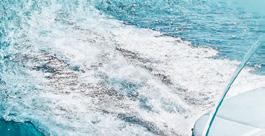


































Delaware
Pontoon Express | 302-945-0654 22572 Harbeson Rd, Harbeson, DE pontoonexpress.com
North Bay Marina Inc | 302-436-4211 36543 Lighthouse Rd, Selbyville, DE northbaymarina.com
Maryland
Annapolis Inflatables/Fawcett Boat Supplies 410-267-8681 | 919 Bay Ridge Rd, Annapolis, MD annapolisinflatables.net
Intercoastal Marine | 410-335-0458 2925 Eastern Blvd, Baltimore, MD intercoastalmarinemd.com
Scott’s Cove Marina | 410-784-7624 10551 Eldon Willing Rd, Chance, MD scottscovemarina.com

Hidden Harbour Marina | 301-261-9200
600 Cabana Blvd, Deale, MD hiddenharbour.net
Maryland Boat Sales | 410-574-3988 2426 Holly Neck Rd, Essex, MD mdboatsales.com
Middle River Landing Marina | 410-686-0771 1901 Old Eastern Ave, Essex, MD chesapeakemarine.net
Powersports of Crofton | 410-697-5965 7045 State Route 3 North, Gambrils, MD hondaofcrofton.com
Galahad Marine | 410-827-7409 121 Rental Ln, Grasonville, MD galahadmarine.com
Danny’s Marine LLC | 410-228-0234 3559 Chateau Dr, E. New Market, MD dannysmarine.com
PYY Marine | 410-255-1771
1132 Pasadena Yacht Yard Rd, Pasadena, MD pyymarine.com
Thornes Marine | 410-957-4481 1237 Greenbackville Rd, Stockton, MD thornesmarine.com
Jett’s Marine, Inc. | 804-453-3611 18477 Northumberland Hwy, Reedville, VA jettsmarine.com
Friday’s Marine | 804-758-4131
(Malise Marine Sales & Service) 14879 GW Memorial Hwy, Saluda, VA facebook.com/fridaysmarine
Legasea Marine | 757-898-3000
821 Railway Rd, Yorktown, VA legaseamarine.com





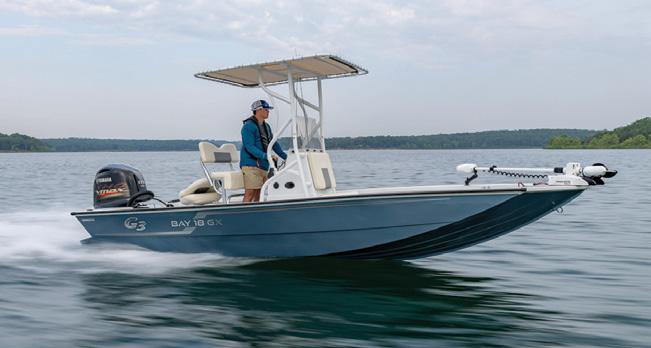
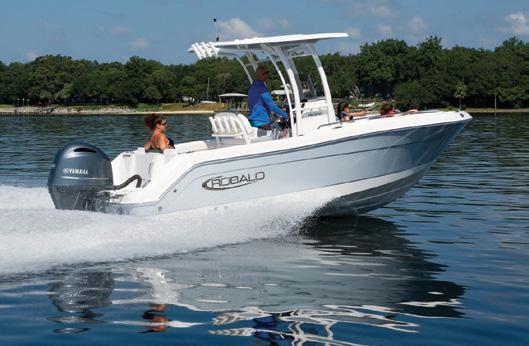

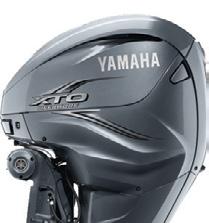


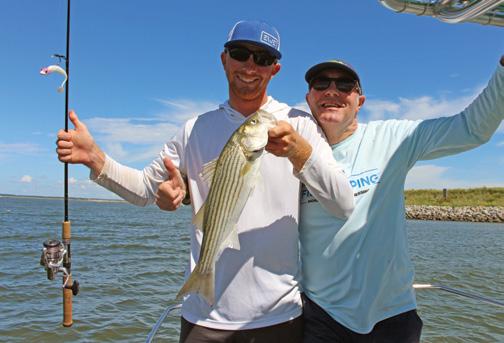
42
Last Chance Cobia
Ready to wrap up the 2024 cobia season with a bang? Here’s how.
By Lenny Rudow
44
Tech and Tactics
Get the gear to maximize your fishboat’s fishability. By Zach Ditmars
46
10 Essential Items for Your Tackle Box for Beginners
Gear up with everything you need to get started fishing.
By Adam Greenberg
49
Targeted Destruction
There are a number of sunken craft once used for target practice, which today do service as Chesapeake Bay fishing hotspots.
By Wayne Young
52
Dancing Finesse Jigs for Smallmouth Bass
Learn to effectively employ one of the best techniques for catching smallmouth bass in rivers. By Adam Greenberg
54
Beware the Fetch…
When the winds are blowing, the speed of the gusts is only one of the factors to consider.
By Mack Speed Walt
Alex had a tremendous day sight-casting off Cape Charles this summer. Photo courtesy of Deane Ford



SEPTEMBER 7 – 15
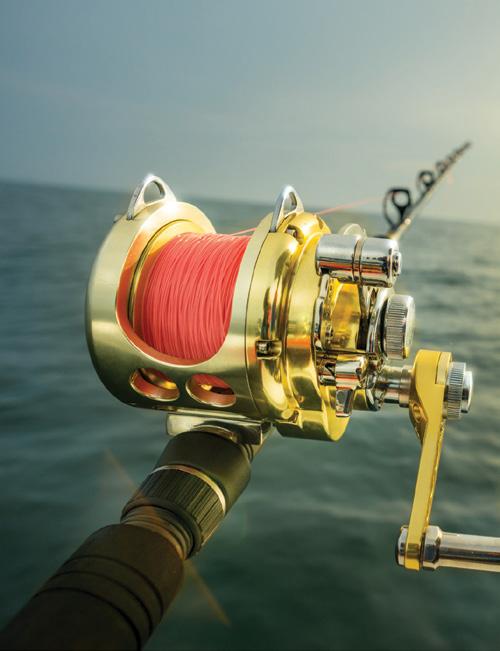
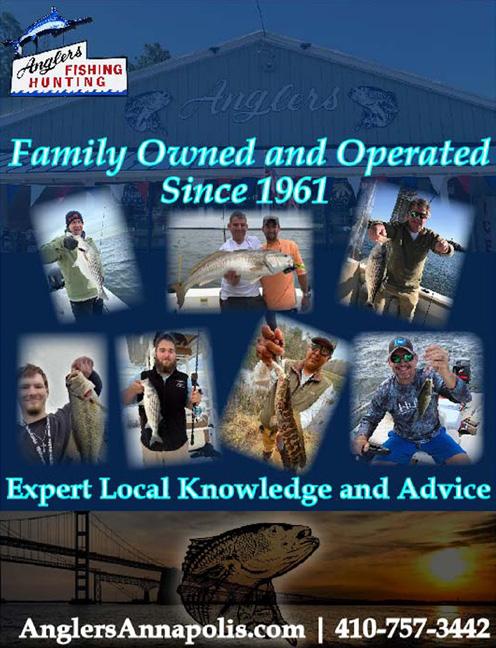
612 Third Street, Suite 3C, Annapolis, MD 21403 (410) 216-9309 FishTalkMag.com
ANGLER IN CHIEF
Lenny Rudow, lenny@fishtalkmag.com
PUBLISHER
Mary Iliff Ewenson, mary@fishtalkmag.com
ASSOCIATE PUBLISHER
Chris Charbonneau, chris@fishtalkmag.com
MANAGING EDITOR
Molly Winans, molly@fishtalkmag.com
SENIOR EDITORS
Beth Crabtree, beth@fishtalkmag.com
Kaylie Jasinski, kaylie@fishtalkmag.com
COPY EDITOR
Lucy Iliff, lucy@fishtalkmag.com
FISHING REPORTS EDITOR
Dillon Waters
ADVERTISING SALES
Katie Lange, katie@fishtalkmag.com
Eric Richardson, eric@fishtalkmag.com
CUSTOMER SERVICE MANAGER
Brooke King, brooke@fishtalkmag.com
DISTRIBUTION / BROkERAGE / CLASSIFIEDS MANAGER
Beatrice M. Roderick, beatrice@fishtalkmag.com
ART DIRECTOR / PRODUCTION MANAGER
Zach Ditmars, zach@fishtalkmag.com
GRAPHIC DESIGNER / PRODUCTION ASSISTANT
Royal Snyder, royal@fishtalkmag.com
TACTICIAN
Craig Ligibel
COASTAL CORRESPONDENT
John Unkart
CONTRIBUTING WRITERS
Alan Battista, Jim Gronaw, Chuck Harrison, Capt. Monty Hawkins, Eric Packard, David Rudow, Wayne Young
DISTRIBUTION
Martin and Betty Casey, Gregory and Dorothy Greenwell, Dave Harlock, Ron and Colleen Ogden, John and Chrissy Wathen
Rudow’s FishTalk is a monthly magazine for and about Chesapeake and Mid-Atlantic anglers. Reproduction of any part of this publication is strictly prohibited without prior consent of the officers of Rudow’s FishTalk LLC. Rudow’s FishTalk LLC accepts no responsibility for discrepancies in advertisements.
Rudow’s FishTalk is available by first class subscription for $45 a year, and back issues are available for $4 each. Mail payment to Rudow’s FishTalk Subscriptions, 612 Third Street, Suite 3C, Annapolis, MD, 21403.
Rudow’s FishTalk is distributed free of charge at more than 850 establishments along the shores of the Chesapeake and the DelMarVa Peninsula. Businesses or organizations wishing to distribute Rudow’s FishTalk should contact the Rudow’s FishTalk office, (410) 216-9309 or beatrice@fishtalkmag.com.
Member Of:





































Embarking on the open water is an exhilarating experience, lled with the promise of adventure and relaxation. Whether you’re a seasoned sailor or a weekend cruiser, protecting your vessel with proper insurance is not just a choice—it’s a necessity. Explore the reasons why every boat owner should prioritize boat insurance for a worry-free voyage.



The open water can be unpredictable, with unexpected storms, collisions, or other potential accidents. Boat insurance can give you nancial protection if there is damage to your vessel, providing coverage for repairs or replacement.
Accidents on the water can result in damage to other boats, docks, or even injuries to passengers. Boat insurance offers liability coverage, which can pay for damages or injuries you’re liable for while boating, up to speci ed limits, and lawsuit costs if you’re sued. This includes damage you cause to another watercraft or if someone on or near your boat is injured and you’re found to be legally responsible.
Unfortunately, boat theft and vandalism are realities that boat owners face. Boat insurance has comprehensive and collision coverage that can protect you against events outside of your control, including theft and vandalism.
Accidents on the water may lead to injuries for you or your passengers. Boat insurance offers a range of optional medical payments coverage limits, helping to cover medical expenses if you are in an accident or someone is hurt on your boat, regardless of fault.
If you nanced the purchase of your boat, most lenders require insurance coverage to protect their investment. Having boat insurance not only ful lls these requirements but also gives you peace of mind knowing that your nancial interests are safeguarded.
Some water municipalities and marinas may require proof of insurance for docking or accessing certain areas. Boat insurance allows you the exibility to explore different destinations without worrying about entry restrictions.
Progressive boat insurance can include optional Sign & Glide® On-Water Towing coverage. If your boat is disabled or breaks down on the water, Sign & Glide® pays for on-water towing, jump starts, soft un-groundings, and fuel delivery.
Wreckage removal
If your boat sinks, Progressive boat insurance will cover the cost of removing your boat from the water (if removal is legally required).
Investing in boat insurance is not just about protecting a valuable asset; it’s about safeguarding the memories, experiences, and joy that come with your on-water adventures. Don’t let unforeseen circumstances disrupt your journey—navigate with con dence, knowing that Progressive boat insurance has you covered. Ensure a smooth and worry-free voyage, because when it comes to your boat, peace of mind is the ultimate luxury. Scan to get a quote in as little as 4 minutes
learn more.
By Lenny Rudow
If we’ve said it once we’ve said it 1000 times: we need more science. It’s downright shocking how little we know about the populations of the fish that we chase, even the striped bass — despite its massive impacts on our region’s angling opportunities and the economic activity it generates. Much of the science we have on these fish is decades old, and much is blatantly flawed. Fortunately, however, we have a new study on striped bass mortality as it relates to tackle use conducted by the Massachusetts Division of Marine Fisheries, which was recently presented to the Striped Bass Board at the spring Atlantic States Marine Fisheries Committee meeting.
I’d encourage everyone who cares about rockfish to check the study out; the link to it on the ASMFC website is outrageously long and it pains me to print it, but Googling won’t get you to it in short order so take the time to type in: https:// asmfc.org/files/2024SpringMeeting/ AtlStripedBassBoardPresentations_ Spring2024.pdf
The results at this point are partial, but already some spectacularly interesting observations can be made.
• The use of circle hooks in this case had little to no effect on striped bass mortality. A 6/0 J hook resulted in a ninepercent probability of mortality, a 7/0 circle had 10 percent, an 8/0 circle had nine percent, and a 10/0 circle showed 11 percent. While the study didn’t nail down the “why,” in the presentation it’s suggested that the popular circle hook models currently on the market may not be ideal for minimizing gut hooking, or that hook style may not be as important for live bait as for cut bait (previous studies done in Maryland showing lower circle hook mortality had used cut bait, while this one employed live bait).
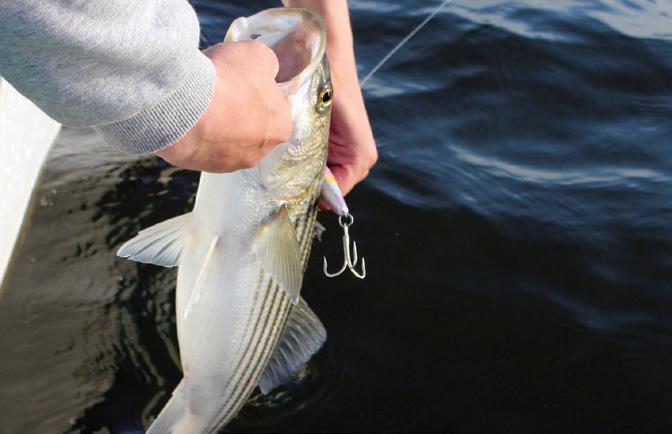
• Bait results in the most gut-hookings, but the next most injurious type of gear is surface lures. Surface lures resulted in the most foul-hooking, following bait as producing the most visible blood and fish that were obviously weak or unable to swim upon release.
• Lures with treble hooks caused more damage to the fish than singles, and multiple trebles on a single lure caused the most damage. However, multiple single hooks on a lure were about as damaging as a single treble.
• Increased water temperature was validated as a major contributor to decreased vitality in the fish being released. Interestingly, however, there was little variation found among fish caught in water from 45 to 75 degrees. Above 75 degrees far more fish displayed weakness or a complete inability to swim.
Interesting takeaways, right? These results seem to debunk some of the factors we had considered to be “known” and based on science, and raises some new ones that hadn’t been considered before. We have to remind ourselves that this study was done hundreds of miles north of the Chesapeake, in oceanic waters where temperatures don’t get nearly as high as they do here in the Bay. Results in Massachusetts don’t necessarily translate to fact here on the Chesapeake Bay. We also have to remember that the studies that have been performed here are so old that livelining with spot hadn’t yet replaced chumming as the main mode of bait fishing for rockfish, and that we had different tackle on the market back then. So, we have to be very careful about drawing solid conclusions from any of these studies. In fact, there’s only one conclusion this makes crystal clear: we need more science.
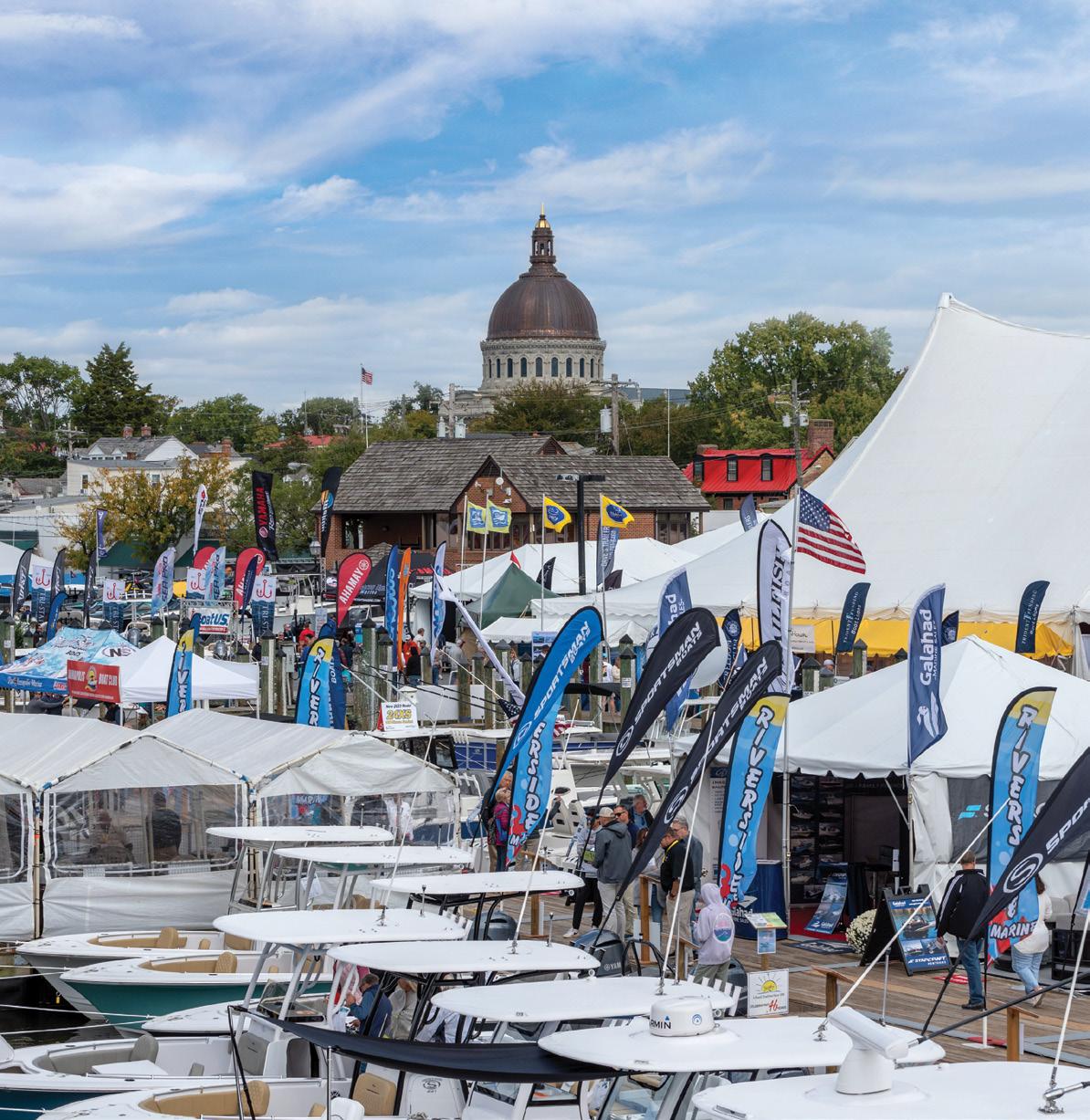



Dear FishTalk,
Iwas just on a charter boat that will remain nameless. We trolled in the Upper Bay all morning and didn’t catch a single fish. The whole time the captain and his mate were complaining that the one-fish rockfish limit was killing their business and there were “plenty of fish out there.” The whole time I was also bored to tears, and the whole experience was just unpleasant. I wish I had asked them, which is better, a one-fish limit and a fish in the box, or a two-fish limit and no fish in the box? I won’t be getting on a charter boat again this year.
-Steve L., via email
Dear Steve, We all wish there were more fish around and that we could get back to a two-fish limit for all anglers. Hopefully one day that will happen, but that day is simply not today. Despite what some people may want to believe, every iota of science on the striped bass tells us we’re fishing on a limited stock with very few baby rockfish in the pipeline. There are many professional captains and mates who realize this and have a very different attitude from the ones you encountered, and we’d encourage you to consider finding one you might better mesh with either via our Charter Guide or word of mouth. Meanwhile, remember that this is fishing we’re talking about — even in the best of times the best anglers in the world do get skunked every now and again.

Dear FishTalk, Iinvented a casting device that’s essentially a potato gun you can use to blast a plug way farther than you can sling it. I thought I could try marketing it, but my friend thinks it’s not a novel idea and might even be illegal in some areas. Have you ever tried anything similar?
-Harmon T, via email Dear Harmon, No comment.

Q: What did the Bay say to the Tributary?
A: Nothing, it just waved.
-Anonymous








By Lenny Rudow

The Virginia Marine Resources Commission (VMRC) voted five to four to repeal the 16-year prohibition on winter crab dredging, a fishery which harvests over 90-percent female crabs. That followed VMRC’s own staff recommending they keep the winter dredge fishery closed, along with 186 public comments opposing the proposal. Which were obviously overshadowed by… the zero comments in favor of it.
Note that when the blue crab fishery was declared a federal disaster in 2008, the number of females was estimated to be below 100 million and the prohibition was enacted. Just two years later, the number of females bounced back to 250 million. Clearly, this is not sufficient evidence to show the VMRC commissioners voting
It’s official: FishTalk contributor Eric Packard (also known as “the man who goes fishing every day”), has earned his Master Angler Milestone Award from the Maryland DNR. Having caught 10 fish of different species worthy of citation, Packard capped off his qualifying fish this summer when he tied into a 24-inch speckled sea trout. Some other standout catches include a 26-inch pickerel, a 30-inch snakehead, and a 45-inch red drum. Along with exercising his casting arm year-round on a near-daily basis, Packard also serves on the Maryland Sport Fisheries Advisory Committee, paints some rockin’ good fish art (keep your eyes peeled for this fall’s Team FishTalk Fish For a Cure fundraiser to get an original Packard painting while donating to a great cause), and is an active member and volunteer with the Coastal Conservation Association of Maryland. Congratulations on earning your new “degree,” Eric!

to lift the prohibition that eliminating winter dredging had a positive effect on the population of females—or perhaps they just think there are too many girl crabs scuttling around out there. Virginia Coastal Conservation
Association chairman Rob Allen may have said it best when he stated, “The opening of a winter dredge fishery would be an irresponsible step in the wrong direction and is a measure the public does not support.”
The Maryland DNR announced the recipient of the 2024 Sport Fishing Achievement Award, Dr. Ray Morgan. A professor emeritus with the Appalachian Laboratory of the University of Maryland Center for Environmental Studies, Dr. Morgan has performed research on aquatic ecology, pollution ecology, and fisheries genetics. His work included researching urbanization effects on streams and studying the effectiveness of bioswales to reduce road pollution, and Dr. Morgan is nationally recognized for his research on brook trout genetics. Dr. Morgan has also served on the DNR’s Sport Fisheries Advisory Committee. We thank him for a long history of commitment to fisheries research and stewardship and send congratulations on receiving this recognition of his efforts.
One of the biggest-money rockfish tournaments around—we’re talking about a $200,000 payout here, people—the Tiki Lee’s Rockfish Invitational, will be happening September 19 to 22. The entire Chesapeake is open to competition, with the largest three-fish stringer taking the prize and anglers fishing two of the three days. All boats leave from Tiki Lees Dock Bar and must check in at the bar by 5 p.m. Thursday evening. Visit tikileesrockfishopen.com to see the full rules and sign up.
September 21, get ready for the second annual Peninsula Saltwater Sport Fisherman’s Association’s second annual Sheepshead Tournament. Hosted by Wallace’s Bait and Tackle in Foxhill, VA, prizes include a healthy $2000 payout ($1000 for the heaviest sheep) plus calcuttas, and anglers can fish in any Virginia or federal waters. The captain’s meeting takes place on the 20th at Wallace’s. Added bonus: there’s a $100 prize for the largest oyster toad! Visit pswsfa.com to get all the details.
By Eric Packard
The Third Annual Nanticoke River Invasive Fishing Derby was held on July 20. There were over 30 teams competing and removing nearly 600 pounds of invasive species from the river. With the biomass of the river being 70 precent blue catfish, it is no surprise that the tournament was a success. There were 376 blue catfish and eight snakehead caught. Prizes and gift cards were awarded in 22 divisions. The largest catfish, caught by Lonnie Skinner, weighed 33.6 pounds and the biggest snakehead, caught by Team Demar, came in at 8.8 pounds. The derby is presented by Salisbury University and run by Dr Noah Bressman’s research lab. Studying the stomach content of the fish caught provides data to evaluate the potential impact of invasives on the local ecosystem.
River Invasive Fishing Derby.

The Tidewater Kayak Anglers Association (TKAA) 20th annual Kayak Fish for Charity Tournament is set for September 28, with a (mandatory) captain’s meeting at 7 p.m. on the 27th at the Lake Wright Convention Center in Norfolk. Anglers can fish any Virginia waters in this catch-photorelease event, held via iAngler. The competition includes both fresh and saltwater plus youth divisions. This is a nonprofit tournament with proceeds benefiting Heroes on the Water, so check it out and sign up now; visit the TKAA on their Facebook page or at tkaa.org to learn more.
The Tangier Classic is scheduled for September 27 to 29, with the Crisfield American Legion Post 16 serving as headquarters. Anglers fish two of the three days in powerboat, kayak, and youth divisions, anywhere within the Chesapeake Bay and its tidal tributaries. This is a hybrid C-P-R tournament with anglers able to submit measurement photos or have fish measured at the Legion. There’s a healthy list of rules so be sure to check out the complete official rules PDF online. Payouts are based on entries and calcuttas, with 50 percent of the entry plus proceeds going to the tournament beneficiaries, two very young children facing huge medical challenges. See their stories, wipe away the tears, and then enter and make an additional donation, all at tangierclassic.com
The Bahia Marina Flounder Pounder is September 8 in Ocean City, MD. The one-day tournament runs from 10 a.m. to 4:30 p.m. with a captain’s meeting immediately beforehand at 9:30 a.m. Winner-take-all calcuttas determine the winnings, and fishing takes place from Fenwick Ditch to the Verazano Bridge and the south jetty. Visit bahiamarina.com for the details.


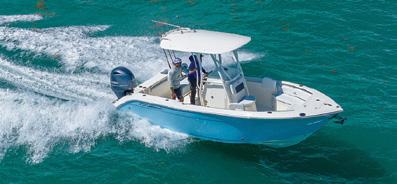
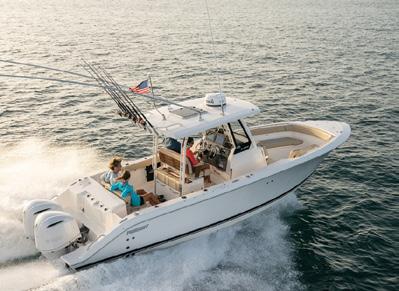











Damien Cook, of Lowland Outfitters
This month we talk with the founder and owner of Lowland Outfitters—who is also the IGFA all-tackle world record and Maryland state record holder for northern snakehead—Damien Cook. Our topic: snakehead fishing as fall sets in.
Q: First tell us about your go-to rig for snakehead fishing.
A: My go-to rig is one of my custom M.Fers Outdoors 6’9” MH moderate fast rods paired with a Bates GOAT reel spooled with 30-pound braid.
Q: What are your top three lures for fall snakeheads?
A: Chatterbaits, Dartspins, and inline spinners with a paddletail on the back.
Q: As the weather begins to cool what sort of changes in behavior do you see from the fish, and how do you react from an angling standpoint?
A: When fall hits you can find snakeheads a little farther off the cover. There will still be some up tight so cast up tight, but you’ll begin finding fish on channel edges and the edges of holes, too. I also prefer reed lines in the fall.
Q: Is there a critical water temperature at which you see things really begin to change, or is it a more gradual shift?
A: I’d say that when the temps start dropping back into the 60s the fall bite really begins to pick up as they feed up for the winter. They definitely get fatter in the fall. They also stack a bit more than they do in the summer, so staying put in one spot longer can pay off.
Q: Do tides have a big impact at this time of year?
A: Tides can and will impact these fish any time of year. That being said, it depends on where you’re fishing. Where we fish in Dorchester, for example, tide movement is minimal so it takes a back seat to wind, but very low or very high tides will position these fish. Low tides pull them away from shoreline structure and high tides allow them to get back there. On a falling tide, pay attention to choke points that bait will move through.

Q: What’s the biggest mistake you see snakehead anglers make?
A: Not putting enough casts in the right spot and moving on too fast.
Q: Open mic – what would you say to the average snakehead angler who wants to go fishing in the fall?
A: Keep an open mind because when you think you have these fish figured out they will prove you wrong. Above all else stay positive and patient, and also practice your casting. To me it’s a numbers game—the more often the lure is in the right spot the better the chances of hooking up. Think of fishing as a combination of luck and skill and the more you practice, the better your skills will be and the less luck you’ll need. Never think of a skunk trip as a bad one, because even if you don’t realize it, you’re learning.





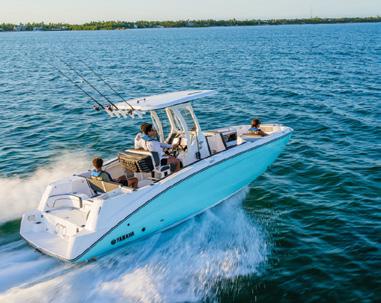
editor’s Note: We wish we could personally test every item that appears on these pages, but that simply isn’t possible. So that you know the difference between when we’ve physically tested a piece of gear and when we’re writing about it because it’s newsworthy and we think you’ll want to know about it, we’ve developed this FishTalk Tested button. When you see it printed next to something in this section, it means we’ve personally run it through the wringer.
By Kaylie Jasinski
The Sea to Summit 20L lightweight waterproof dry bag is the perfect sized bag for a short excursion. Made from a bluesign-approved recycled 70D nylon with a C0 non-PFC DWR finish, the interior polyurethane coating is white to improve visibility and make it easy to find small items in poor light. The lightweight dry bags come in a variety of sizes from 1.5 to 35 liters and use the same Hypalon non-wicking roll-top closure as other Sea to Summit dry sacks. They also feature a D-ring attachment point at the buckle, the oval base prevents it from rolling away on sloping surfaces, and they are double-stitched with fully taped waterproof seams, meaning the body of the bag is waterproof. However, you will want to avoid submersion since water can seep through any dry bag with a roll-top closure. I have used the 20L bag on various paddling excursions where I was easily able to fit snacks, a towel, additional layers for when the weather got cooler, and even my DSLR camera. You may notice that the outside of the bag will appear wet if it gets splashed, but to date, the items inside have always been perfectly dry even when the bag sat in a puddle of water in my kayak. Just be sure you roll the top of the bag down several times and secure it with the buckle to ensure it’s fully sealed. I also recommend purchasing the optional and detachable Dry Bag Sling to make it easier to carry hands-free. Price: $32.95; optional sling: $9.95. Check it out at seatosummit.com.


By Kaylie Jasinski
f I plan to go offshore, I usually take a Dramamine just in case, but lately I’ve found it doesn’t always do the trick. So, when I heard of a wristwatch-type band that claimed to prevent seasickness without any medication, I had to learn more. Reliefband is a patented, clinically proven, FDA-cleared technology that works by gently stimulating the underside of the wrist. These pulses travel through the nervous system to the part of the brain that controls nausea and vomiting. To ensure the right fit, simply place two fingers on the underside of the wrist just below the crease, apply a small amount of included gel, and then fasten the straps snugly. Starting at power level 1, increase stimulation until tingling is felt in the palm and middle finger at a comfortable level. I have worn the Reliefband several times over the past few months, both offshore with large, slow rollers and inside the Bay when boat wakes create that washing machine effect, and I was pleasantly surprised each and every time. I imagine the experience could be different for different people depending on the severity of symptoms, but I often forgot that I was wearing it and only later realized I didn’t feel a bit of nausea. I found it even worked if I turned it on after I started feeling seasick, and it also helped with motion sickness in a car. So far, I have not had to turn it on above level two (of six). I tested out the Reliefband Sport which is the waterproof model ($249.99) but there are other models to choose from ranging in price from $99 to $279. Learn more at reliefband.com
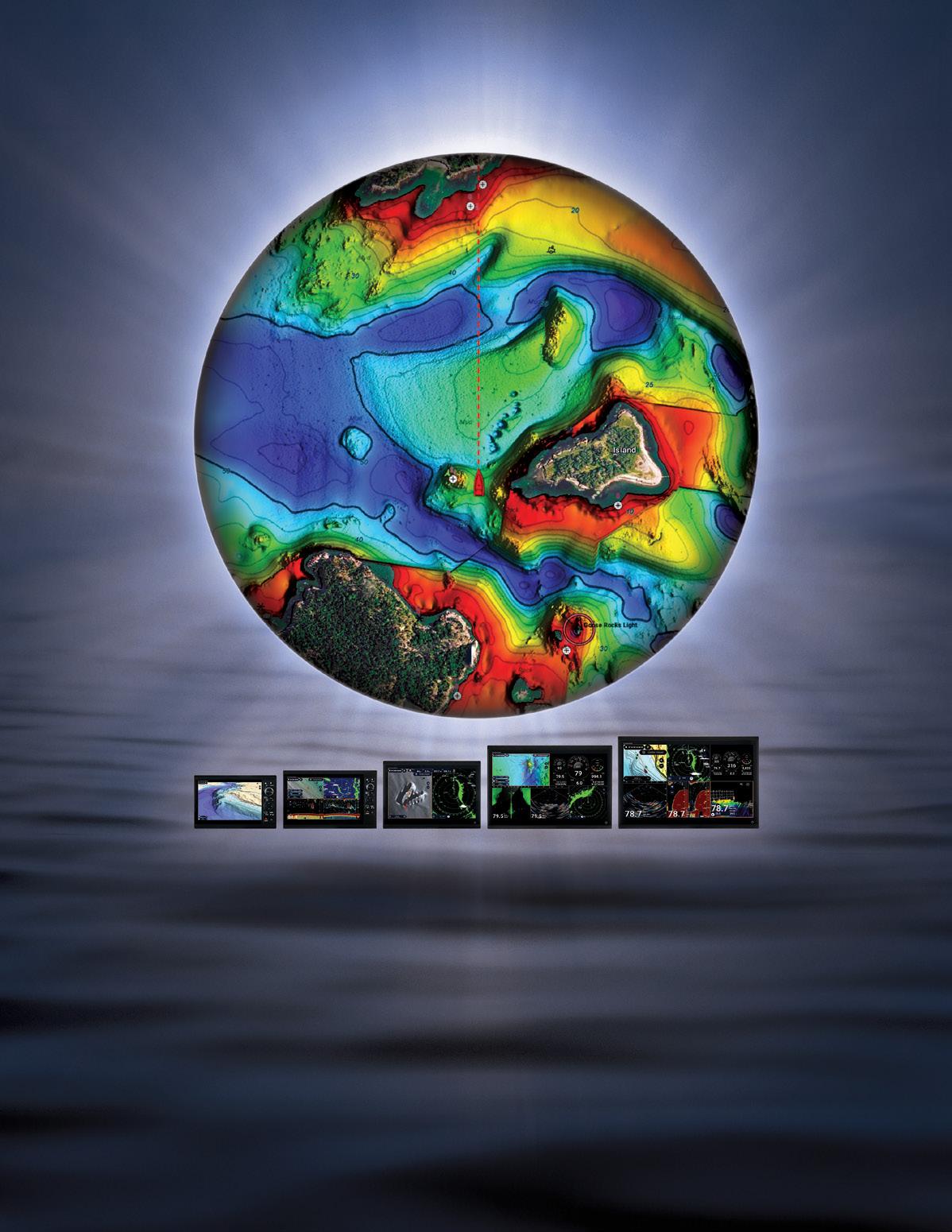
You got new charts! Explore the ocean with vibrant terrain & depth shading, using all-new TZ MAPS. Don’t just take our word for it. See for yourself. Scan here, and we’ll show you!

We’re all for trying new stuff, which is definitely what St. Croix is doing with the Mojo Musky Trigon with Grasp II. The rods themselves are essentially the existing SCIII carbon fiber Musky Mojos but with seven new models incorporating medium-fast options for crankbaits and telescopic choices. The big changes, however, are in the Trigon “anthropometric” handle with a curved triangular profile and the Grasp II “palming seat” designed to allow you to grip the rod while keeping your wrist in alignment with the rod and reel. An interchangeable trigger system on the reel seat allows for changing between a full-size handle, a smaller option, or none at all. Price: $280 to $370. Visit stcroixrods.com for the details.
kuma has a new line of spinning reels called the X-series, built around an aluminum body, a CNC-cut anodized aluminum drive gear, and an anodized aluminum spool. It’s outfitted with — get ready for this — a whopping 10 ball bearings plus a roller bearing, in the search for ultimate smoothness. X-series reels are available in 2500, 3000, and 4000 sizes, with 6.2:1 gear ratios. They put out a heaping helping of drag, too, 22 pounds for the 2500 and 3000 and 24 pounds for the 4000. Even more surprising is just how light these reels are. The 2500 tips the scales at 7.0 ounces, the 3000 at 7.2 ounces, and the 4000 at 8.2 ounces. Price: $219 to $299. Visit okumafishingusa.com to learn more.
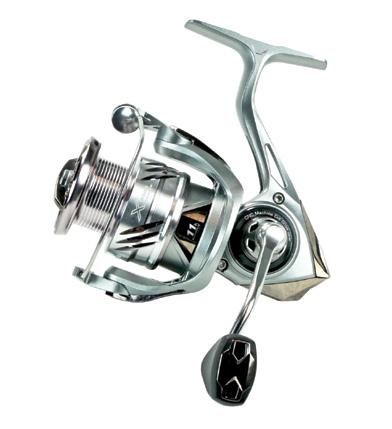

By Lenny Rudow
When it was time for a new fishfinder on my 16’ skiff I didn’t want to spend a million bucks, but I did want to have side-finding abilities (that actually worked). I landed on a Humminbird Helix 7 SI GPS G4, which kept price reasonable and was compact enough to fit on the small boat but delivers down- and side-imaging, dual spectrum chirp, and a chartplotter with Humminbird’s basemap built in. After months of use in Chesapeake tributaries and rivers I give this one a big thumbs-up. Installation was a piece of cake both with the binnacle mount and the transom-mounted transducer, and the side- and down-looking views are downright impressive for a relatively low-cost unit. This isn’t what you’ll choose if you want a big, glorious screen on a big boat deserving a networked system, but if you want side-finding abilities on a small boat or kayak without breaking the bank I’m not sure it can be beat. Price: $549.00. Visit humminbird.johnsonoutdoors.com to learn more.




For those of you who find fishing to be a spectator sport, Caigo has the Automatic Fishing Rod and Reel. (There’s actually a lot more in the name but it’s pretty darn redundant and we only have so many pages of magazine). When a fish tugs on the line it pulls the trigger, which activates the spring-loaded rod to snap up and set the hook. If you’re confused as to how this works, just watch the video which includes 26 seconds of the Automatic Fishing Rod and Reel sitting there with nothing happening. Mercifully, when it’s over you’ll still be confused. Price: $69.99. Visit Amazon to remain confused.
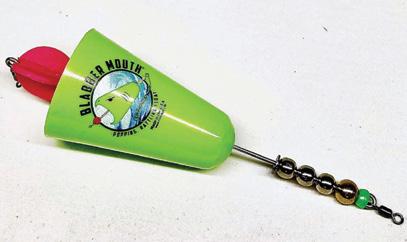

f you’re looking for popping corks that cause an unusual ruckus check out the Fish Grip Blabber Mouth. They feature a finish in orange, pink, and green which is much glossier than most, and have four beads plus washers on the spoke. These corks also have an unusual plastic prop at the top to add some extra disturbance to the water when you give ‘em a yank. Added bonus: these are made in the US of A and military and first responders get a discount with their GovX ID. Price: $10.80. Visit thefishgrip.net to put a cork in it.


f you want a cooler that chills to the extreme but is small enough to fit into a console compartment, the Plano Frost should be on your short list. Available in 14- and 21-quart carry-on sizes (they also offer a larger not-so-stowable 32-quart model), the Frost has inch-thick insulation all the way around, is airtight when sealed via flip-down dual stage tensioning latches and a gasket, and is sturdy enough to stand on. It comes with a removable dry basket and tiedowns and a ruler is molded into the top. Price: $149 for the 14-quart model, $179.99 for the 21-quart model. Visit planooutdoors.com to learn more.
ant your fishing boat to shine like a star? Of course you do! Starbrite says their new Ceramics Wax & Seal with silicon dioxide will outlast wax and repel water, dirt, salt, and contaminants plus protect against UV rays. Unlike most ceramic-containing finishes, however, this one also has surfactant cleaners and will take off the grime as it’s applied. This is a wipe-on, wipeoff finish with no dry-time necessary. Price: $29.99. Check it out at starbrite.com.


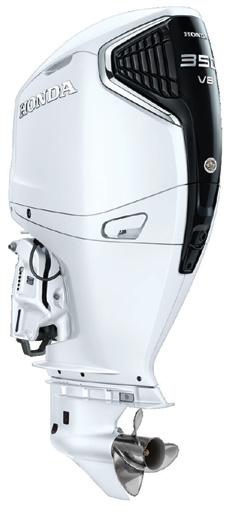

BF350 is our first-ever production V8 engine for use on either land or water.
fuel efficiency and a range of features and functions found only on Honda outboards, the BF350 offers premium power and unparalleled performance for truly extraordinary experiences.
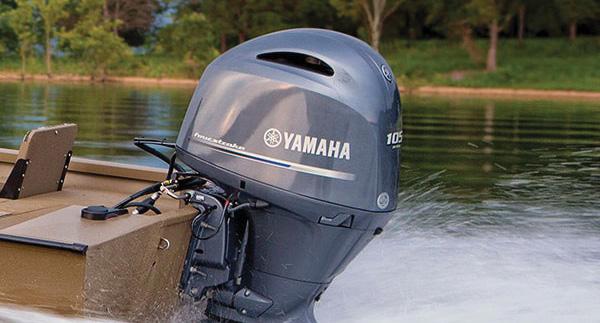
September through Mar 31, 2025
cca great chesapeake invasives count Help fishery managers collect important data about which invasive species are being caught and where. Log your catches and get entered to win prizes each month. Free to register at ccamd.org
through Sep 30
5th annual mongo offshore challenge
The sportfishing world’s most unique challenge! You can fish any time, anyplace you want, with blue marlin, swordfish, yellowfin tuna, bigeye tuna, wahoo, and mahi-mahi categories in the East Coast division. These are winner-take-all divisions, with additional calcuttas in play.
4 fsff monthly meeting
7 to 8:30 p.m. at the Free State Fly Fishers Clubhouse (behind Ford Hall) at the Davidsonville Family Rec. Center. Speaker: Capt. Johnathan Bland will discuss his guide services in general and winter fly fishing for pickerel in particular. Questions: rybeer@gmail.com
7 17th annual brrc larry farinetti fishing tournament
Catfish tournament to replace the annual rockfish tournament. Presented by Back River Restoration Committee. $300 entry fee (up to 6 anglers), includes entry to the after-party. Catfish judged by weight. Guaranteed first prize: $3500. Register: savebackriver.org


7
4th annual portsmouth paddle battle
9 a.m. to 1 p.m. on the Elizabeth River in Olde Towne Portsmouth, VA, followed by the Portsmouth Junior Battle for youth ages 8-14 from 1 to 5 p.m. SUP and kayak categories. Featuring music, good food, and children’s activities.
7
free kids fishing tournament
Hosted by the North Bay Fishing Club. 9 a.m. to 1 p.m. at the Levy Pavilion at North East Community Park (250 W. Walnut St., North East, MD). Registration starts at 8:30 a.m. or pre-register by emailing northbayfishingclub@yahoo.com. Ages 5-16. Loaner rods and bait available to borrow or bring your own. Free picnic lunch for all.
7
fsff monthly fly tying
10 a.m. to 12 p.m. at the Free State Fly Fishers clubhouse (behind Ford Hall) at the Davidsonville Family Rec Center. Join FSFF as one of our members instructs us on how to tie a couple of fly patterns and demonstrates proper tying techniques. All materials will be provided. Please bring your vise and tying tools if you have them. Questions: rybeer@gmail.com
7 Not my child lil’ amp’s bent rods rockfish tournament Rain date Sept. 8. Rods in at 6 a.m. Weigh-ins and after party at Red Eye’s Dock Bar. Early Weigh-ins start at 2 p.m. with mandatory arrival at weigh-ins by 3:30 p.m. $550.00 per boat with 4 anglers ($100 per additional angler). Registration Cut-Off August 24, 2024. Not My Child, Inc.’s mission is to provide access and unwavering support for individuals in recovery.
7 onancock bay challenge fishing tournament
6:30 a.m. to 5 p.m. Weigh-in at the park near the wharf. Eastern Shore of Virginia Anglers Club. Blow day September 8.
7 reelin’ 4 a cause charity fishing tournament
It’s more than a fishing tournament; it’s a fundraising tournament, and the captain/team that raises the most money will be crowned winners of the Captain’s Challenge. Benefiting Calvert Health’s Cancer Center.
7 shaw bay raft-Up concert
Raft up and relax with music by Eastport Oyster Boys and Wye River Band in Shaw Bay along the Wye River. This free concert raises funds and awareness for clean water efforts on Maryland’s Eastern Shore through ShoreRivers.
7-8 combos for kids
Combos for Kids provides fun opportunities to celebrate and enrich the lives of children and their families through the sport of fishing. Presented by Anglers Sport Center. At Port Covington: CCA Family Fishing (boats needed). Contact: EJ Harman, (410) 299-2693.
9 talisman therapeutic riding rockfish rodeo fishing tournament
All boats launch from Fisherman’s Crab Deck at 6 a.m. in Grasonville, MD. Fun-filled fishing competition with local watermen guiding you to the best spots, followed by a crab feast. $225 single angler entry (includes crab feast ticket) or $110 crab feast ticket. Benefits Talisman Therapeutic Riding. (443) 239-9400.



Fish For A Cure (F4AC) is a fishing and fundraising competition that benefits cancer patients and their families in our community. Over the last 17 years, F4AC has raised more than $5 million to support the Cancer Survivorship program at Luminis Health Anne Arundel Medical Center’s Geaton and JoAnn DeCesaris Cancer Institute. The 18th Annual F4AC Tournament, Paul C. Dettor Captain’s Challenge, and Shore Party will take place at Safe Harbor Annapolis, our new tournament home.

PRESENTING SPONSORS
LHAAMC Medical Staff
The Albert W. Turner Charitable Lead Annuity Trust / Carrollton Enterprises
SHORE PARTY SPONSORS | Heller Electric Company Inc. • REALTORS Biana Arentz, Pam Batstone and Heather Giovingo The Wiggins Law Group P.C.
CAPTAIN SPONSORS | AllTackle • FishTalk • Continental Contractors, Inc. • KPMG LLP • PropTalk • What’s Up? Media
BAR SPONSOR | Katcef Brothers Inc.
ANGLER SPONSORS | Eagle Title • Fulton Bank • Liff, Walsh & Simmons • Liquified Agency
FIRST MATE SPONSORS | Allstate Insurance: Riggins & Valcich Agency • Apple Signs, Inc. • Bluewater Yacht Sales
Brait Family Foundation • BuilderGuru Contracting • CAM Wealth Management - Ameriprise Financial
Doldon W. Moore and Associates, LLC • MacKenzie Contracting Company, LLC • Naptown Scoop • North Point Yacht Sales
St. John the Evangelist School • St. Mary’s Elementary School • Sunraycer • The Kahan Center • Wharf 38
NAVIGATOR SPONSORS | Allegis Global Solutions • Rentals to Remember • St. John Properties • UnitedHealthcare Water Works Car Wash
DECKHAND SPONSOR | Intrinsic Yacht & Ship


11
frederick saltwater anglers monthly meeting
Food starts at 6 p.m. followed by meeting at 7 p.m. at 289 Willowdale Drive, Frederick, MD 21702. Each meeting has a speaker, vendor, prize raffle, and 50/50.
14
anne arundel county river Days
11 a.m. to 4 p.m. at Fort Smallwood Park, Pasadena, MD. Water activities, environmental educators, boat rides, live music, food trucks, games, and more for all ages. Registration is free and required: aacounty.org/riverdays

Contact your Local Dealer Today for Sales, Service, and Warranty.
Delaware
North Bay Marina | 302.436.4211 36543 Lighthouse Rd, Selbyville, DE northbaymarina.com
Carlisle’s Marine | 302.389.0100 49 Artisan Dr, Smyrna, DE carlislesmarine.com
Maryland
Fairwinds Marina | 410.216.0205 1000 Fairwinds Dr, Annapolis, MD fairwindsmarina.com
Bosun’s Marine Maryland | 410.286.1350 411 Winchester Creek Rd, Grasonville, MD bosuns.com/about-us-maryland
Total Marine | 410.604.6000 106 Wells Cove Rd, Suite 2, Grasonville, MD totalmarine.com
PYY Marine | 410.255.1771 1132 Pasadena Yacht Yard Rd, Pasadena, MD pyymarine.com
Richardson Marine | 410.745.9279 9649 New Rd, McDaniel, MD 21647 richardsonsmarinerepair.com
Thornes Marine | 410.957.4481 1237 Greenbackville Rd, Stockton, MD thornesmarine.com
15 bay bridge paddle East Beach at Sandy Point State Park in Annapolis, MD.
18-21 fsff casting clinic
Part 1: Sept. 18 from 6 to 7:30 p.m. at the Free State Fly Fishers Clubhouse (behind Ford Hall) at the Davidsonville Family Rec. Center. Duber Winters, Joe Bruce, Rich Batiuk, and Mark Bange will share their extensive fly casting experiences as club members cast their own fly rods. Part 2: Sept. 21 from 10 a.m. to noon at Adelphi Mill Park. Questions: truthemeyer@gmail.com
19-21
6th annual tiki lee’s rockfish invitational
The entire Chesapeake is open to competition, with the largest three-fish stringer taking the prize and anglers fishing two of the three days. All boats leave from Tiki Lees Dock Bar in Sparrows Point, MD.
21 boatyard beach bash
4 to 10 p.m. at the Annapolis Maritime Musuem. Key West style music. Tickets: $150 includes drinks and food. Benefits the Annapolis Maritime Museum.
21 2nd annual sheepshead tournament peninsula saltwater sport fisherman’s association.
Hosted by Wallace’s Bait and Tackle in Foxhill, VA. Anglers can fish in any Virginia or federal waters.
21 fsff monthly hands-on session
10 a.m. to 12 p.m. at the Free State Fly Fishers Clubhouse (behind Ford Hall) at the Davidsonville Family Rec. Center. Topic: Packing your gear for travel to distant fly fishing locations with Duber Winters. Questions: rybeer@gmail.com
24-28
trawlerfest baltimore
At Harbor East Marina in Baltimore’s Inner Harbor. New and preowned cruising powerboats, education and demonstrations, and networking.







26
the World is Your oyster fest Shucking competition, immersive educational moments, and more. Presented by the Oyster Recovery Partnership at the B&O Railroad Museum.
27 havre de grace lighted boat parade
The parade will start at the Amtrak bridge and traverse the shoreline to Green Buoy #17. Prizes for five categories.
27-29 6th annual tangier classic
Anglers fish two of the three days in powerboat, kayak, and youth divisions, anywhere within the Chesapeake Bay and its tidal tributaries. A portion of the proceeds support local children in need. Tournament headquarters: Crisfield American Legion Post #16 in Crisfield, MD.
28
tkaa 20th annual kayak fish for charity tournament
Captain’s meeting Sept. 27 at 7 p.m. at the Lake Wright Convention Center in Norfolk. Anglers can fish any Virginia waters in this catch-photo-release event. This is a nonprofit tournament with proceeds benefiting Heroes on the Water. Tidewater Kayak Anglers Association.
29
cca supports military families on mallows bay
9 a.m. to 2 p.m. at Mallows Bay on the Potomac River. CCA Maryland will again partner with the National Park Trust, the National Marine Sanctuary Foundation, NOAA Fisheries, and NOAA’s Office of National Marine Sanctuaries to host 40 participants from two distinct national military family organizations.
Oct O ber
3-6 annapolis powerboat show City Dock, Annapolis, MD.
5 fsff monthly fly tying
10 a.m. to 12 p.m. at the Free State Fly Fishers clubhouse (behind Ford Hall) at the Davidsonville Family Rec Center. Questions: rybeer@gmail.com
5-12 fsa musser memorial
King Mackerel tournament presented by the Frederick Saltwater Anglers in Harkers Island, NC.
10-14 annapolis sailboat show City Dock, Annapolis, MD.

24
cca annapolis chapter banquet 6 to 9:30 p.m. at the Chesapeake Bay Foundation Philip Merrill Center (6 Herndon Avenue, Annapolis). This fundraising dinner directly supports CCA Maryland’s focus on ensuring the health of our marine resources and anglers’ access to them, and our objective to conserve, promote, and enhance our marine resources for the benefit of the general public. Food, drinks, oysters, raffles, and silent and live auctions.
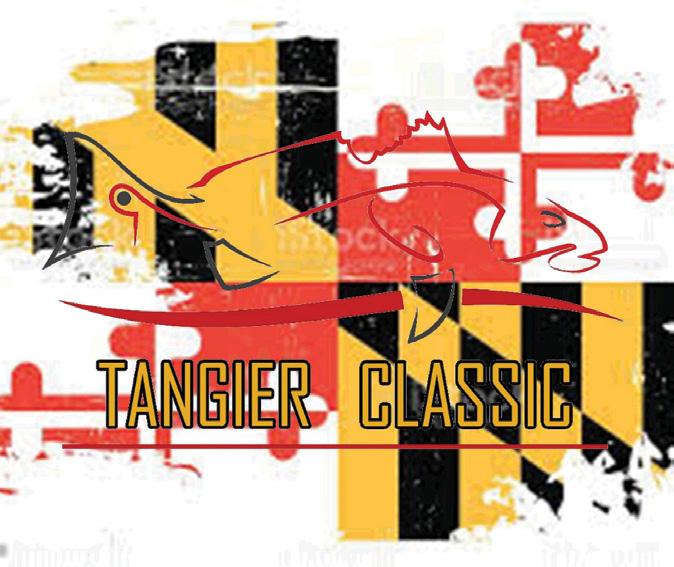



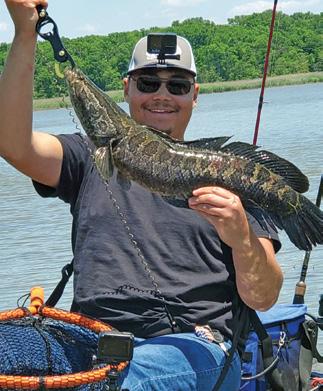





















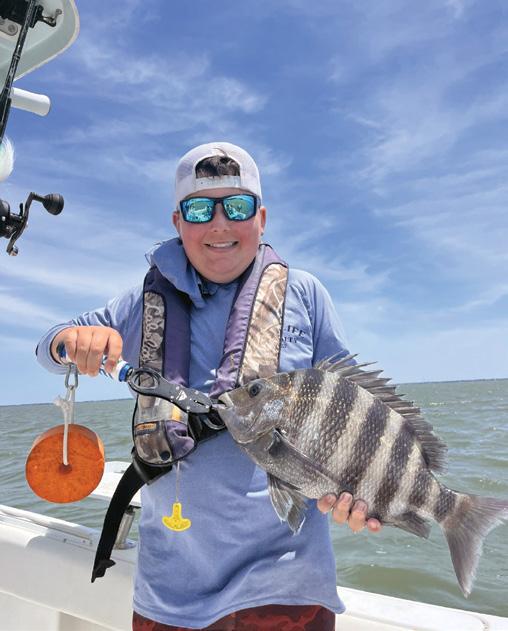





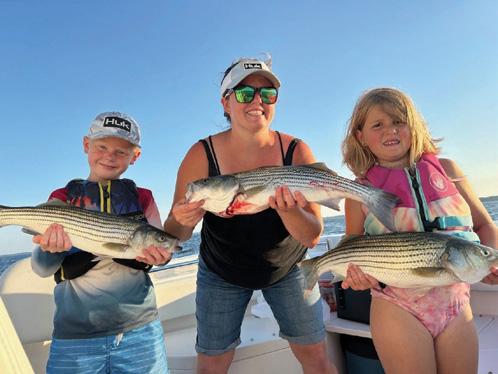




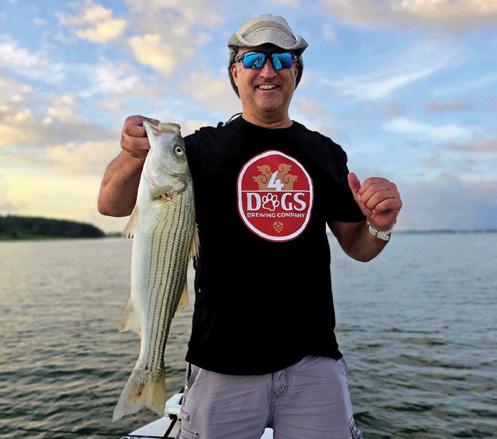
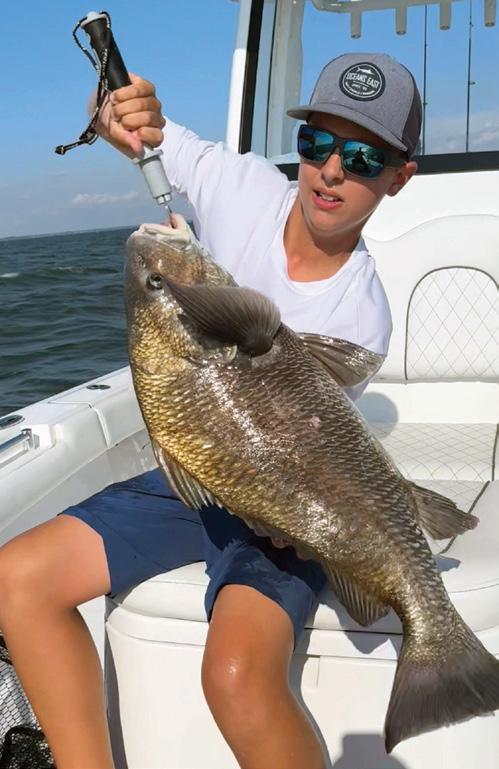


















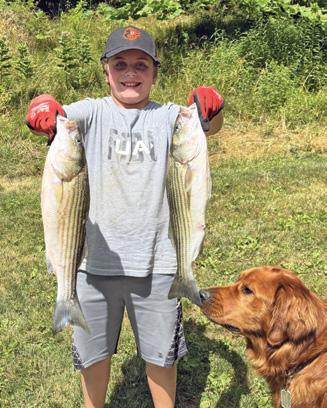

By Lenny Rudow
You know it’s a blustery day when the drone can’t keep up with the boat as you’re running upwind, even at just-planing speed. The roiled water and white-caps are another indication. And the big, bold “Small Craft Warning” in red print on the day’s NOAA weather forecast is another. Did we cancel our video shoot? Heck no, we’re running a World Cat 235TE today, an all new model that can take on a vicious chop with more speed and comfort than most monohulls with five or six feet more LOA.
With a pair of Yamaha F150s on the transoms we burned the water at speeds up into the mid-40s before we began launching off of waves, at which point I pulled back on the throttles. In smooth water, this should be a 50-mph boat. Running up-sea and down-sea speeds in the 30s made for a comfortable cruise despite the snotty conditions, and like
some other well-designed powercats, this boat loved running right into the teeth of a head sea. The faster you go the more air you pack between the hulls, cushioning the waves. The entries of the individual hulls are far narrower than that of a monohull, meanwhile, slicing instead of pounding. Think of two knives cutting through the water as opposed to a spoon. The net result? We’ll just have to run downwind when the drone is in the air so it can keep up with us, and the shoot goes on.
Anyone who’s spent time on a quality-built powercat already knows about the smooth ride, but on some, they’ve also experienced a “snap roll.” The widely spaced hulls are significantly more stable than a rocking, rolling monohull, but when they do get thrown off-balance on some boats the righting moment is abrupt, swift, and uncomfortable. This was perhaps the biggest downside on the 22 Glacier
Bay I owned for many years — so I was thrilled when we pulled the 235TE into a beam sea, shifted into neutral, and discovered that this boat had a comfortable, predictable drift without that snappy roll period. Added bonus: those widely spaced hulls carry their beam all the way forward, so there’s a lot more interior room than you’d find on most boats of equivalent LOA. In fact, World Cat says that overall it has 35 percent more space.
Just how is that space dedicated? To fishing, fishing, and fishing. The “TE,” after all, does stand for Tournament Edition. Unlike its sistership the 235CC, which has flanking seating to either side in the bow, the TE has wide-open deck space capped off up front with a single seat running across the beam. Pull the cushion and you have a small elevated forward casting deck, or stand at deck-level and you have a voluminous bow cockpit. And

LOA: 22’7”
Beam: 8’6”
Displacement: 5275 lbs.
Draft (hull): 9”
Transom Deadrise: NA (cat)
Fuel Capacity: 120 gal.
Max Power : 300 hp
Bosun’s Marine, Grasonville, MD, (443) 347-6314 or bosuns.com; Taylor Marine, Milford, DE (302) 251-2506 and Ocean City, MD (443) 647-8265; or taylormarinecenter.com; Norfolk Marine, Norfolk, VA, (757) 895-7432 or norfolkmarine.com
when you do want seating in the bow there are fold-out seats integrated into the forward inwales which sit flush and completely out of the way when folded closed.
Like many other attributes of this model this bow layout is inclined more towards big-water fishing as opposed to bay boat style inshore fishing. And yes, the 235TE does have big-water capabilities beyond the wave-eating ride. With a whopping 120 gallons of fuel capacity and a cruising economy of about 2.6 mpg at 30 mph, range pushes darn close to 300 miles accounting for a 10-percent fuel reserve. Collapsible 18’ Gem Lux outriggers are an option, and there are 37.5-gallon fishboxes in the deck.
Additional fishing features include a 30-gallon transom livewell flanked by insulated bait box/coolers, fresh and raw water washdowns, and a tackle stowage drawer in the back of the leaning post.
The rod holder count is awesome, too: there are four in the aft gunwales, four in the forward gunwales, five rocket launchers on the T-top, four more on the leaning post, and racks for three more rods on either side of the console.
There were several other standout features we noted during our rough-sea sea trial. The three-sided helm enclosure provides a lot more protection at the helm than you might expect on a boat of this size, with a full windshield and sides that mate with the T-top and supports. The slide-out cooler under the leaning post is accessible even in the forward position, so you won’t have to fumble with barrel locks to get a drink. And the stern platform and ladder is a beefy chunk of hardware which will never flex and sway like most telescopic boarding ladders.
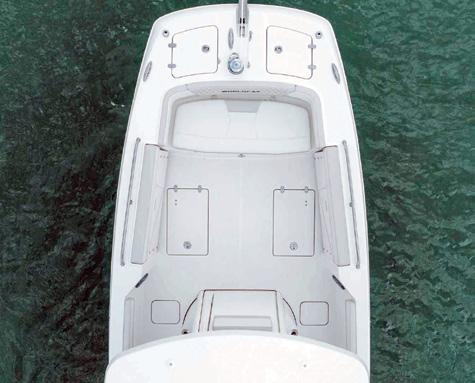
The fit and finish is on par with the best of ‘em, dockside handling with the widely spaced twins is magnificent, and… oops! We’re just about out of space here. But when you get a chance to run a fishboat this sweet it’s just so easy to keep droning on and on…
You drive a Bentley, wear a Rolex, drink Dom Perignon, and you love to fish — but only with the same level of luxury and style? Step aboard a Formula
LOA: 49’1”
Beam: 13’9”
Displacement: 32,100lbs.
Draft: 1’4”
Transom Deadrise: 22 deg
Fuel Capacity: 700 gal
Max Power : 1800 hp
Rhode River Boat Sales Edgewater, MD, (410) 798-4445 or rhoderiverboatsales.net
457 Center Console and bask in its glory, because this center console yacht is bound to become the Gucci of the Gulf Stream.
We were on the 457 Center Console Sport at the Miami International Boat Show, and realized in short order that Formula has taken their 387 Center Console models
up to true yacht levels with this larger version. Eye-popping touches included an air-conditioned bridgedeck with two-row seating including inductive phone chargers for every seat, a console cabin with 6’6” headroom and full accommodations for weekending aboard, triple 22” MFDs at the helm, and a Rockford Fosgate stereo system

so potent it seemed to move the boat along at two or three mph with the engines shut down.
The 457 Center Console Fish is the angling-inclined version, and it spices up the mix with goodies like a pair of 50-gallon pressurized livewells, a 280-gallon fishbox, fold-away aft seating, and rodholders galore. Note that although Formula is historically a builder of performance and pleasure boats, they brought some serious fishheads aboard for the creation of the 387 Center Console Fish and applied that angling acuity to the 457 as well.
Of course, you can’t lay claim to iconic luxury status without also delivering the goods in the performance department. The 457 Center Console runs on triple V12 Mercury Verado 7.6L 600-hp outboards. They deliver a cruise in the upper 40s and a top-end breaching the 60-mph mark. That means you also get all the cool new tech and perks that go along with those groundbreaking powerplants, like independently articulating lower units, two-speed automatic transmissions, electro-hydraulic steering, and enough torque to get an African bush
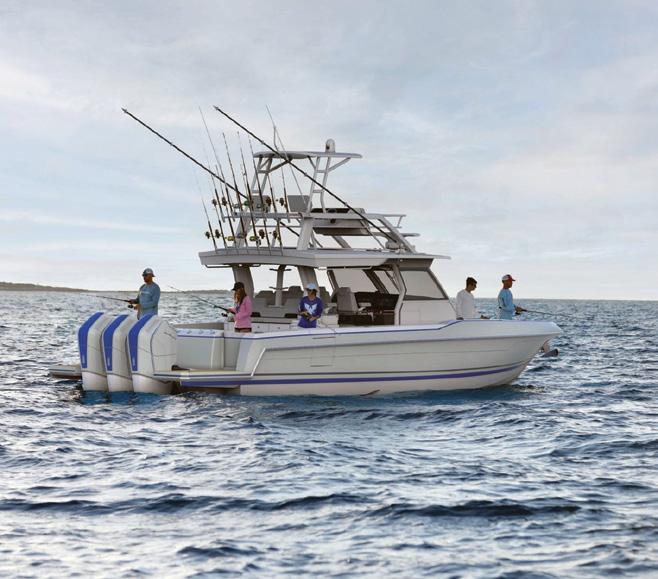
elephant on plane in 3.2 seconds. But performance isn’t all about the horsepower. This hull carries Formula’s twin-stepped, multiplane 22-degree deadrise hull design, backed up by a resin-encapsulated
Mercury continues to grow its electric offerings, now reaching a whopping 11,000 watts (around 15 horsepower) with the 48volt Avator 110e. Unlike some manufacturers they package it with a matching modular power supply, the LiFePO4 lithiumion 5400 Power Center, four of which can be connected to house a grand total of 21,600 watt-hours of juice. The 110e also has some perks we’re not used to seeing on most electric outboards this size, like power tilt, available helm displays for remote controls, wireless connection with SmartCraft Connect, a choice of 15”, 20”, and 25” shaft lengths, and 8”, 9”, and 10.5’ propeller options. Each 5400 Power Center weighs in at 93 pounds and the motor is 124 pounds. Price: TBD at this time. Visit mercurymarine.com to learn more.
cross-framed foam-filled stringer and bulkhead system.
You thought there wasn’t a center console yacht built to your standards? Guess again. And when you go for the sea trial, don’t forget the Dom.

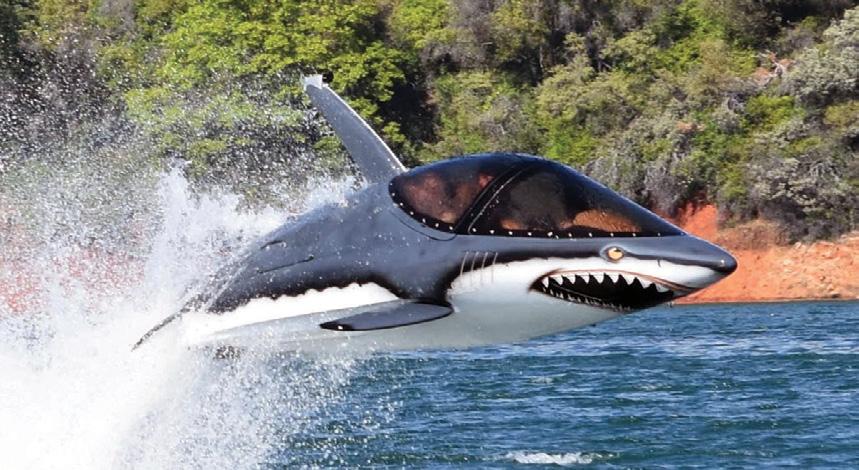
“Z” version (available in shark, killer whale,
Don’t ask Mom before visiting seabreacher.com.


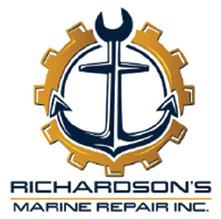




ready to wrap up the 2024 cobia season with a bang? here’s how.
By Lenny Rudow
We get just three months to target cobia on the waters of Chesapeake Country and for many anglers, those 90 days are more exciting than any other season. As we go to press with the September edition those days are drawing short. If you want to make the most of what remains keep these late summer cobia fishing tips in your back pocket — and if you’re seeing this after September 15 all we can say is sorry, but why the heck didn’t you race out to get this edition of FishTalk sooner?!?
Everyone knows cobia hang out around buoys and flotsam, right? And most of us can remember catching fish off buoys at some time in the past, so we like to check them on a regular basis. But dig back deep into that memory bank and try to think of when you’ve been successful with this tactic. Has it usually happened early in the season, or did it happen towards the end?
Serious sharpies with some experience under their belts will probably have noticed at some point that early in the season it’s often a waste of time to focus on going from one buoy to the next. In June you’ll usually draw a blank, in July you generally won’t have a tremendous amount of success, and the later the season gets the more often you’ll spot fish. That’s not to say you’ll never catch cobia off buoys early in the season and this generalization is

less true in the ocean and along the coast than it is up inside the Bay. But as a general rule of thumb, the later the season gets the more you should be peeking at buoys and large items you might spot floating on the water’s surface.
The same goes for rays. Yes, you might spot cobia among rays at any time of the season. But you’ll see it happening more and more often as the season progresses. And for the next few weeks it’s more likely than ever that spotting a school of rays at the surface will lead to spotting the big man in the brown suit — give those rays a glance or two early on but at this time of year sharpen your focus on them.
Another tactic that seems to pick up steam as we get deeper and deeper into the season is trolling hoses. Particularly for anglers in northern areas of the Cobia’s range, pulling 24” red and pink hoses behind number-two and numberthree planers is probably the most productive late-season tactic of all.
Two factors contribute to this being a top producer: first, the farther north you go the more the fish tend to be scattered, fewer in number, and tougher to locate, so covering lots of ground is a good move. Trolling lets you do so. And second, the water clarity becomes lower and lower the farther up the Bay you go. As a result, sight fishing north of the Target Ship or thereabouts is
often very difficult. You can still spot fish that are right on the surface but those just a couple-few feet or more beneath the waves are essentially invisible — unless you pull a hose right past their nose.
Another common transition you’ll see late in the season is cobia hanging out along tidelines and seams in the water, which may have a temperature change and at this time of year often gather foam, small bits of flotsam, and a key indicator to look for: jellyfish. Yes, jellyfish.
Strong tidelines can gather jellyfish into rather large, dense (and somewhat scary!) congregations. Cobia won’t be mixed in with the jellies themselves, but when you see those jellyfish piled up you know the area is experiencing a collision of water bodies and tide. There’s a good chance you’ll also be able to see a seam in the water running in either direction from the jellyfish, showing you a potential path to the action for both sight fishers and trollers.
Okay anglers: time is running short. These big beasts are just about as potent a predator as you’ll find in our waters, they grow far bigger than most, and they fight like few other fish to visit the Bay. Don’t let the season end without taking one more cruise for those cobia.

Yes, of course you can still chum, drop down bunker chunks and live eels, and catch cobia during this portion of the season. But for whatever reason, while it generally is the best move early on, chumming’s effectiveness does seem to fade as the season progresses and these other tactics begin to shine brighter. That said, if you do set out to chum note that some anglers believe bunker chunks are the top offering early on but live eels take over as the best bait as the season progresses. If you normally set out four bunker chunks and two eels, at this time of year you might be better served by setting out two bunker chunks and four eels.
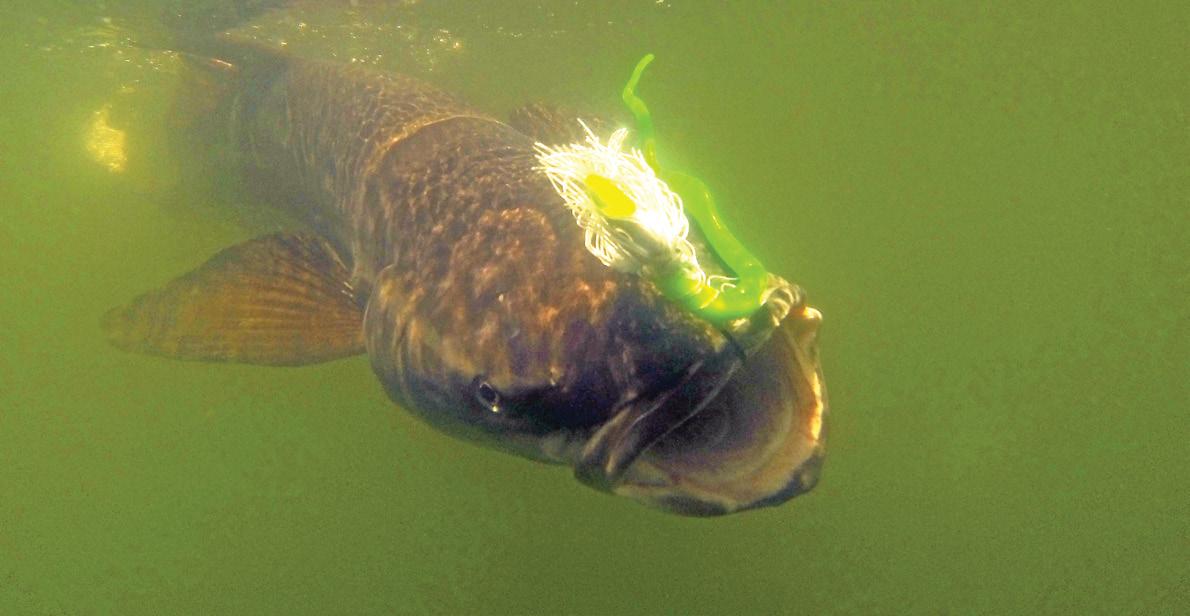
# Look for the fish close to structure and water barriers at this time of the year.
By Zach Ditmars
Irecently had the opportunity to travel south to do some fishing off the coast of Stuart, FL, with Minn Kota Pro staffer Capt. Sam Zyak and Hannah O’Connor from Johnson Outdoors. We fished aboard a Kenner 22 bay boat outfitted with a Humminbird Apex 13 fish finder as well as the all-new Riptide Instinct Quest auto stow and deploy bow-mounted trolling motor. Would we learn anything interesting that could translate into catching more, bigger fish back at home in the Mid-Atlantic?
Hannah and I met Capt. Zyak in the early morning on the pier at River Palm Cottages and Fish Camp in Jensen Beach, FL. He docked the boat and pinned it in placed with the Raptor shallow water anchor system, then informed us that the primary target for the day would be sailfish — his favorite type of fishing. We hopped aboard the Kenner 22 and headed out towards the St. Lucie Inlet.
Once we were just off the Atlantic coast of Stuart, FL, our first stop was to fish for bait. With a fleet of boats in the area, Sam switched his Apex to CHIRP and MEGA down imaging to locate baitfish away from the pack. Popular bait-catching spots can get crowded, and by finding our own school far from the others, when we dropped the sabiki rigs we loaded up the live well with threadfin herring and sardines (aka pilchards) in no time.
We then headed several miles offshore to Sam’s sailfish grounds. From his tower console, Capt. Zyak deployed the Instinct Quest. “Being able to deploy it from the tower and not having to get down and move around people, that sort of thing, is game changing,” he said.
Once on a controlled drift we baited several live-lining rigs with threadfins. With remote control in hand Sam continually monitored the fish finder and navigated the boat on his desired course to present the drifting baits.
When he spotted marks on the port or starboard side of the boat using side imaging, he used the Jog function to move the boat laterally in five-foot increments with one press of a button.
It was not long before the sails moved in to inspect our offerings. Before I knew it, I was cranking on my first billfish... which to my dismay came unbuttoned after a few short seconds. We rebaited and reset the lines, had some more threadfin slashed by bills, and a few timid bites from mahi. Then once again the air was filled with the sweet sound of a drag screaming. After an unforgettable three-minute fight the sailfish breached the surface and made a 100-yard run. Then with one last head shake, my heart sank as the line went slack. I asked the captain what I did wrong, and he replied “You did everything right. That’s just fishing.”

We drifted awhile longer but the bite shut down. Capt. Sam then headed inshore to a familiar wreck site and again used the Quest to set the boat on a specific drift to take us over the structure. It
did not take long before a rod doubled over, and Hannah jumped into action. It took quite a bit of muscle to bring up the brute of an Amberjack before Sam could grab the leader and land the fish.
The new drift feature and jogging abilities were most significant features for us on this trip, but there are a number of difference between the new Quest series and older models. It features a new brushless motor design that runs quieter while enabling 30 percent more runtime than the previous model thanks to a new motor controller and software updates. It also delivers 50 percent more torque than a 24-volt brushed motor, and approximately 30 percent more torque than a 36 volt. And Minn Kota’s new battery monitoring system gives you real-time data right to your Humminbird chart plotter.
Minn Kota says that the new QUEST series electric motor is the toughest they have built to date. It features a carbon-infused shaft available in various lengths up to 100”. Minn Kota has engineered the motor with cast aluminum upper and lower units that are independently sealed to prevent saltwater intrusion. They have also beefed up the motor mount to accommodate the added torque this new hardware puts out.
Integration is easier than ever because the Instinct Quest has a built-in GPS heading sensor that gives this unit out-of-the-box integration with the Humminbird One-Boat Network. This means you control the motor right from the helm using a Helix, Solix, or Apex unit, or from anywhere on the boat with the newly redesigned remote control or mobile app. When pairing your Minn Kota with a Humminbird fish finder, not only can you automatically deploy the motor from the console, but you also gain access at the helm to advanced features like SpotLock and that all-new Drift Mode that came in so handy when chasing sailfish. The advanced GPS navigation gives you the ability to maneuver the boat on a controlled course regardless of whether the wind and current are in your favor, customizing your drift as you navigate over bottom structure or marks, while

the cruise control maintains consistent boat speed. With a CoastMaster SD card loaded into your Humminbird, you can even set your course to follow contour lines on your chart plotter.
During my fishing experience in Florida using this new tech, I could not help but think about how effective these methods of fishing will be on the Chesapeake Bay. I have had
the opportunity to bear witness to the tremendous ability of Spot-Lock fishing on Lenny Rudow’s FishTalker over the past several years. Whether live-lining for scattered pods of rockfish or targeting multi-species at CCA reef ball sites, this new drift mode is definitely a tool we’ll all want in our arsenals. And being able to set your course based on following bottom contours on your chartplotter is nothing short of what Capt. Zyak would call “game changing.”
Adam Greenberg
Gear up with everything you need to get started fishing.
Overwhelmed with the enormous amount of tackle and gear in today’s market? Don’t let the start of your fishing journey be delayed any further. This list, crafted under the assumption that individuals preparing their first tackle box already have a rod and reel spooled up with line, compiles bare-bones techniques, must-have tools, and words of advice for the novice angler.
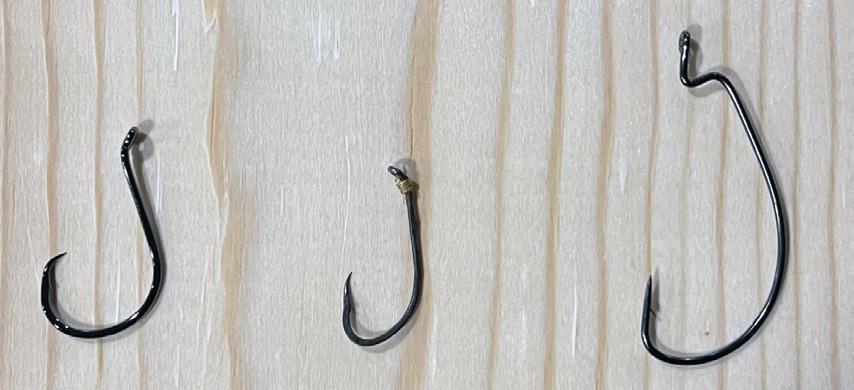
It’s only fitting that the first item on this list is the one that actually sticks the fish. Hooks can be used to hold bait or soft plastics (see Soft Plastics below). They come in many shapes and sizes, but there are three types that you should focus on for your first tackle box: circle hooks, J hooks, and extra wide gap (EWG) hooks. Circle hooks and J hooks are primarily used with live or cut bait, and you’ll want to get a variety of sizes so you can target anything from
a small white perch to a monstrous blue catfish. Just be sure to check your state’s regulations, as fishing in some areas for certain species may ban the use of J hooks with bait and require circle hooks. EWG hooks are for rigging soft plastic lures in a weedless fashion. This technique is great for going after bass or snakehead when the fish are holed up in thick vegetation. Again, it is important to get different sizes to match the profile of your plastic and the species you plan to catch.
Weights are used to keep your bait on the bottom and to increase a lure’s fall rate or the depth at which it will run. This is another category with an overwhelming amount of options that can be simplified. When fishing with bait, the type of weight you’ll want to choose is called a sinker. There are a number of shapes and sizes here as well, but the general rule of thumb regarding your weight selection is: in stronger current or deeper water, pick a

heavier option. Go lighter in shallow, more slack conditions. Regarding shape, grab yourself some pyramid sinkers. They are the most versatile for bottom fishing with live or cut bait.
Another type of weight you should acquire is called a split shot. These small balls of lead are attached directly to the line and work well at keeping your bait on the bottom when fishing with small hooks and tiny offerings for species like trout and bluegill. Split shots can also be employed when using light lures to increase casting distance or swimming depth. Again, get a variety of sizes for different conditions.
Watching a bobber dunk below the surface is one of fishing’s greatest thrills. These floats are attached directly to the line and indicate a strike. As with most items on this list, there are a ton of options when it comes to bobbers. Start off with the simple, round, red and white plastic bobbers that you’ve likely seen before. If you want to be able to cast further, get a few that have some weight built in. Affix your bobber one to three feet above a baited hook, and toss it out. If you see it disappear under the water, start cranking and hold on tight.
The first three items on this list have the basics of bait fishing covered, but artificial offerings have their place in a beginner’s first tackle box, too. Right on theme, there are about a million different soft plastic lures to choose from. For simplicity’s sake, let’s focus on just two.
Paddletails make the list because they imitate small baitfish, and, well, fish eat other fish. All it takes is casting out and reeling straight back towards you to work this plastic effectively. Once you get the lure moving, the boot-like tail will kick back and forth, imitating prey fleeing from a predator. Make sure to match the size of your bait to the size of the fish you’re trying to catch. A crappie finds a one- or two- inch long minnow an adequate snack, whereas a rockfish will be more inclined to go after a bigger meal, say four to five inches long. Rig your paddletail on a jig head (see Jig Heads, coming up next), tie it onto your line, and it’s ready to go.
The second soft plastic lure you should acquire is tailored to America’s favorite fish – the largemouth bass. We are talking about the “stick bait” worm, commonly referred to as the Senko. This bait can be rigged on a jig head, weedless on an EWG hook, or wacky-style with the worm hooked directly through the center. Typically fished slow or pitched into cover, it’s a bass-catching machine. Largemouth are accessible to almost everyone and are a hard-fighting fish that will get beginners hooked for life.

A jig head is a lead shape attached to a bare hook. Thread a soft plastic onto a jig head, and you have an extremely versatile and effective lure. Jig heads, just like most other tackle, come in different weights and sizes. And, just as with everything else discussed thus far, match the size of the hook to the size of the fish you plan to catch and the weight of the head to the depth of the water.
Moving onto hard baits, the inline spinner is highly effective and easy to fish. These lures come in all sizes so you can target anything from crappie to musky. The blades of a spinner create flash and vibration in the water, mimicking your target species’ favorite prey. Simply cast it out and reel back in.
There is nothing more exhilarating than watching a rockfish blast out of the water and attack a lure on the surface. A popper is a topwater lure that has a cupped mouth, allowing it to spit water and make a commotion as it’s retrieved. Fishing a popper takes just a bit of practice, but after catching your first topwater fish, you’ll be glad this one made the list. Cast out, and let it sit for a few seconds. Then twitch your rod tip to make the lure pop in the water, and reel up the slack. Twitch again, reel up the slack. You get the idea. Fish a popper as fast or as slow as you want (oftentimes the fish will decide what speed is most effective, not you!) and get ready for the most exciting bites in fishing.
Unless you plan on sticking your hand into a mouthful of razor sharp bluefish teeth to get your lure back, I’d add a multitool to your list. One with needle-nose pliers will allow you to remove hooks from a fish’s mouth with ease. A knife is also a necessary feature, as you’ll need something to cut bait or line.
You probably know that there are limits on the number and size of fish you can keep. So, having a tool handy to measure the fish you plan to put in the cooler will prevent you from guessing whether or not your prize is legal. Head over to your state’s website to check your local regulations.
This is perhaps the most important item on this list. Fishing without a license is a misdemeanor and comes with a hefty fine. The best practice is to keep it in a place of easy access, like your tackle box, in case you are asked by an officer to present your documentation. You can also store it digitally on your phone. Licenses can be acquired through the state website for whichever jourisdiction you’ll be fishing in.
Not only is it important to practice fishing within the law, but the money you pay to purchase a fishing license goes towards conservation. So, do your part in contributing to the health and prosperity of the waters we all love to fish by grabbing a fishing license for your first tackle box.

There are a number of sunken craft once used for target practice, which today do service as Chesapeake Bay fishing hotspots.
During 1969 the USS Manta became the fourth demolished submarine to adorn the Bay’s bottom, when it was blasted into oblivion by the Navy as a bombing target and sunk somewhere off Hampton, VA. The final resting place was reported as coordinates 37°02’20.40” x 76°11’27.60 just south of the Virgina Marine Resources Commission Bluefish Rock Artificial Reef. This spot is partially covered by Bathymetric Attributed Grid (BAG) Color Shaded Relief which is viewable using the NOAA Bathymetric

By Wayne Young
Data Viewer (BDV). Yet no anomalies are displayed by the BAG data layer and nothing is recorded at this spot in the Coast Survey’s Automated Wreck and Obstruction Information System. So, where is Manta?
Before armchair scouting for Manta, let’s recap Navy, Army, and Air Force “contributions” of marine structural habitat to the Bay and tributaries in the form of military targets and vessels that were demolished during tests, diver training, and salvage, in the locations shown by Chart 1. These are in addition
to past and present military firing and test ranges in the Bay and Potomac River (see “Dynamite Fishing: Fishing at the Target Ships and Nearby Reefs” at FishTalkMag. com). Fishing hotspots are often located adjacent to, near, or within range boundaries. Some are accessble when not live for military activities and others aren’t. Check charts for warnings and restricted areas and remember that each range area and target ship could have unexploded ordnance in surrounding waters; if you snag an object that looks suspicious don’t bring it aboard.
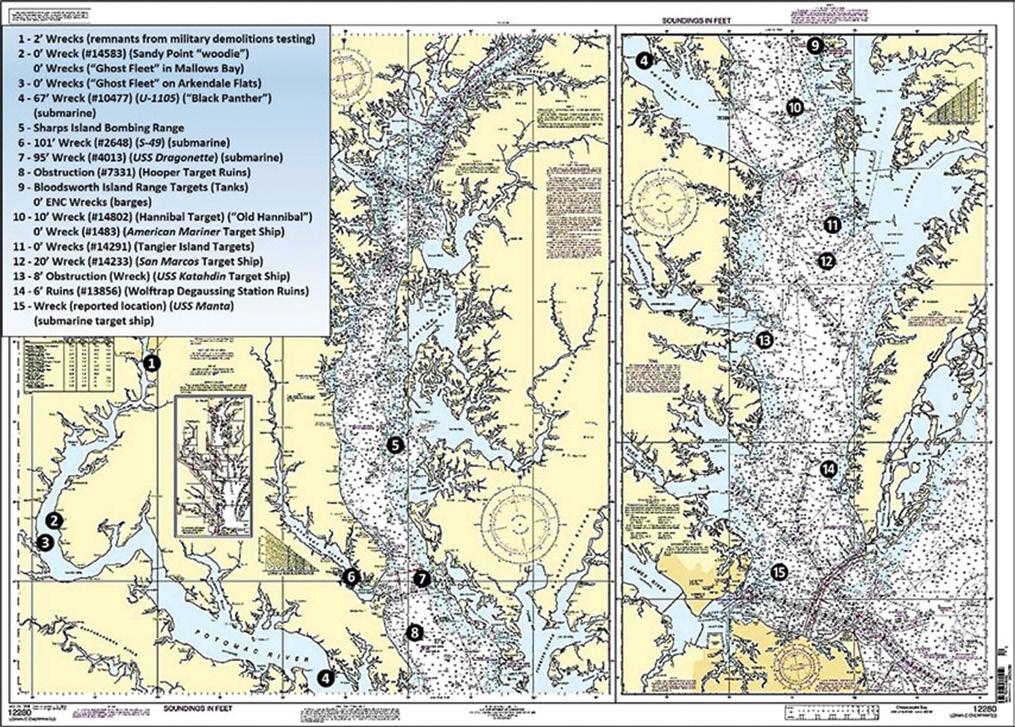
# Chart 1: General location of target wrecks and ruins, test platform ruins, and salvage remnants.
Site 1 is just south of the Wilson Bridge between the ship channel on the west side and the south end of Rosalie Island. This spot was used for explosives and demolitions training. Uncharted wreckage may be encountered almost anywhere. So, this extensive shoal area should be considered for prospecting throughout.
Wooden ships built to support military logistics during World War One were salvaged at two spots in the Potomac River. The ships were burned to the waterline and work crews then collected metal from the wreckage. The largest mass of these burnt-out “woodies” is in Mallows Bay (Site 2) where there’s a public boat ramp at the end of Wilson Landing Road. The area is littered with hulks, many submerged, which pose hazards to navigation but also provide cover for fish. Half of the old steel vehicle ferry Accomac is adjacent to the creek channel that leads to the boat ramp (the other half is thought to be the steel wreckage further north off Stump Neck). There’s also a woodie grounded on the shoreline just to the north at Sandy Point. The wrecks are best accessed by kayak, although a shallow draft boat with trolling motor can be carefully worked into the site.
The salvage operation was initially at Widewater (Site 3) on Arkendale Flats but was removed to Mallows Bay after local complaints about smoke. There’s a cluster of at least 10 woodies centered at coordinates 37°26.243 x 76°19.159. They’re mostly submerged but two break the surface; one is due west perpendicular to the shoreline and one drifted south and grounded at coordinates 37°26.596 x 76°19.102. Note that there’s a recently constructed public boat ramp at Widewater State Park in Virginia. Launching here provides quick access to the wrecks immediately to the north and the extensive shoals, which are striper grounds, to the southeast. Both of the salvage spots are also bass fishing hotspots. They’re now within the Mallows Bay-Potomac River National Marine Sanctuary. Look for snakeheads in the little bay immediately east of the Mallows Bay ramp.
While attending a craft fair and tasting event at a Fredericksburg distillery a few years ago, I happened to meet retired recreational diver Uwe Lovas. He reprised his underwater searches for shipwrecks in the Bay and along the Atlantic Coast. Uwe and fellow divers rediscovered U-1105, the “Black Panther,” an ex-

perimental stealth U-Boat covered with rubber tiles to absorb sonar pings. The sub now lies northwest of Piney Point at Site 4, unfortunately, too deep for effective sportfishing.
Site 5 marks Sharps Island Flats, the geology of which is examined in my books “Bridges Under Troubled Waters” (2018) and “Chesapeake Bay Fishing Reefs 2” (2023), which also provides an update on nearby wrecks. After Sharps Island eroded away to its last few acres, it was used as a bombing range. Period reports say it was bombed by both the Navy and Air Force. Some of the bottom debris in the shallow area on the eastern side may be remnants of the targets. However, natural rock formations, the lighthouse ruin, and the submerged icebreaker rockpile to its south are the primary fishing destinations.
Another submarine wreck, that of S-49, a pre-World War II submarine, is on the bottom west of Point Patience in the lower Patuxent River at Site 6 at coordinates 37°19.899 x 76°29.266. This sub rises about 11’ above the bottom in 100’ of water. Dr. Kent Mountford, writing for the Bay Journal in 2010, described S-49 as about 220’ long and 22’ wide. She foundered and sank while under tow.

Divers are said to have encountered strong currents around the wreckage, and they found it festooned with monofilament nets and colonized by a large number of oysters set on the steel hull. The third submarine relic is USS Dragonette, SS293, Site 7 at coordinates 37°20.494 x 76°18.259. This World War II submarine was sunk in 1961 by a Navy underwater explosion test. Dragonette lies in 135 feet of water off the north end of Barren Island.
The “Hooper Target” is marked as Site 8. This is the circular charted restricted area south of Cedar Point. Former bombing target platforms are now submerged ruins. Site 9 marks the general location of a cluster of tanks in the Bloodsworth Island range. There are other tanks and several sunken barges at coordinates 37°10.170 x 76°05.394 and 37°08.785 x 76°03.141, primary fishing structures. Use caution when fishing here as wreckage comes up to the surface on low tide, but it also holds plenty of fish.
The “Hannibal Target” northwest of Smith Island at Site 10 consists of the submerged, bombed out remains of the target ship Old Hannibal and the rusted, shot up, breaking apart remains of the target ship American Mariner. The area is a well-known and popular spot for cobia, redfish, stripers, and many other species.
Site 11 marks the Tangier Island range, a restricted area where there was a Liberty Ship target. The 20’ least depth wreck of the Target Ship San Marcos is at Site 12. Site 13 marks a charted eight-foot least-depth obstruction off Stingray Point that is consistent with the dimensions of the lost target ship USS Katahdin (see “Ironclad Chesapeake Bay Fishing Reef” at FishTalkMag.com). This is a heavily colonized narrow reef about 100 yards long. Down the Eastern Shore inside the “The Cell” fish haven are the ruins of the Wolftrap Degaussing Station (site 14), a massive subsurface structure that consists of foundation materials and cable piles — and plenty of fish.
The last stop on this scouting voyage is the supposed location of USS Manta and candidates for its actual location. This Balao Class submarine was about
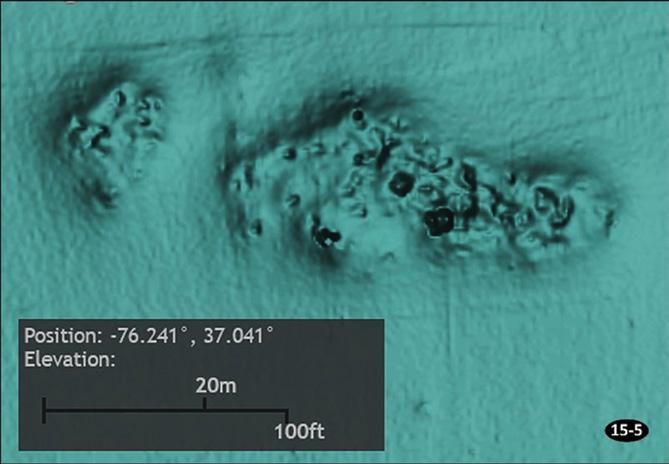
# Image 1: “BAG” Color Shaded relief of unidentified distributed wreckage that approximates the length of a Balao Class submarine. Screenshot from NOAA Bathymetric Data Viewer.

312’ long, 27’ wide, and had a 16’ draft. Several websites give the Manta’s location (marked by a red multi-pointed star) on Chart 2) as Site 15. On the BAG, however, only flat bottom is displayed at the reported location. Checking the data layer inside of Bluefish Rock Fish Haven, none of the structures there resemble a submarine. Scanning the data layer covering surrounding waters produces five anomalies, some charted and some not, including some that could be what’s left of Manta There is a charted obstruction marked as Site 15-1 at coordinates 37°02.635 x 76°09.782, east southeast of the fish haven. There are two 18’ least-depth rectangular objects that each measure about 20’ by 10’. There’s not enough here for a submarine but this does look like a spot worth checking for fish. Site 15-2 marks an uncharted obstruction with a least depth of about 20’ to 22’ at coordinates 37°02.160 x 76°11.154. There’s a cluster of at least a dozen small unidentified objects. The anomaly is about 100’ long and 20’ wide. Although shorter than the sub it could be partially buried, so it’s in the “maybe” category. The feature at Site 15-3 is described as an inverted wreck at coordinates 37°01.546 x 76°10.293. It measures about 35’ long and gives the appearance of an unidentified small boat
wreck. An uncharted anomaly consisting of a cluster of distributed objects is marked as Site 15-4 at coordinates 37°01.677 x 76°11.916. The cluster has a least dept of about 16’. It measures about 150’ long and about 100’ across. The length is off but it could be that vessel if it was blown to bits and smaller pieces are covered in sediment.
The best candidate for Manta, however, is an unidentified but charted 15’ least-depth wreck marked as Site 15-5 at coordinates 37°02.466 x 76°14.432, recorded as distributed wreckage. BAG Color Shaded Relief shows many small objects in a large, shallow scour, as shown by Image 1. Measurements using the BDV distance scale are about 250’ by 50’ wide. It’s about 2.5 miles west of the sub’s reported location, but on almost the same latitude. Although there’s not enough data to confirm this wreckage as Manta, the distributed remains fit a bombing target scenario. Field work for the survey that developed the BAG data layer was performed in 2016, so the displayed wreckage is probably representative of present conditions. It’s the largest bottom feature in the immediate vicinity and certainly worth a look when heading out for Bluefish Rock or Bluefish Rock Fish Haven.
As well as being a regular contributor to FishTalk, Wayne Young is the author of multiple books detailing wrecks and fishing reefs in the Chesapeake Bay, Delaware Bay, and beyond. All are available at Amazon.com, and you can find his Facebook page at “Chesapeake Bay Fishing Reefs.”
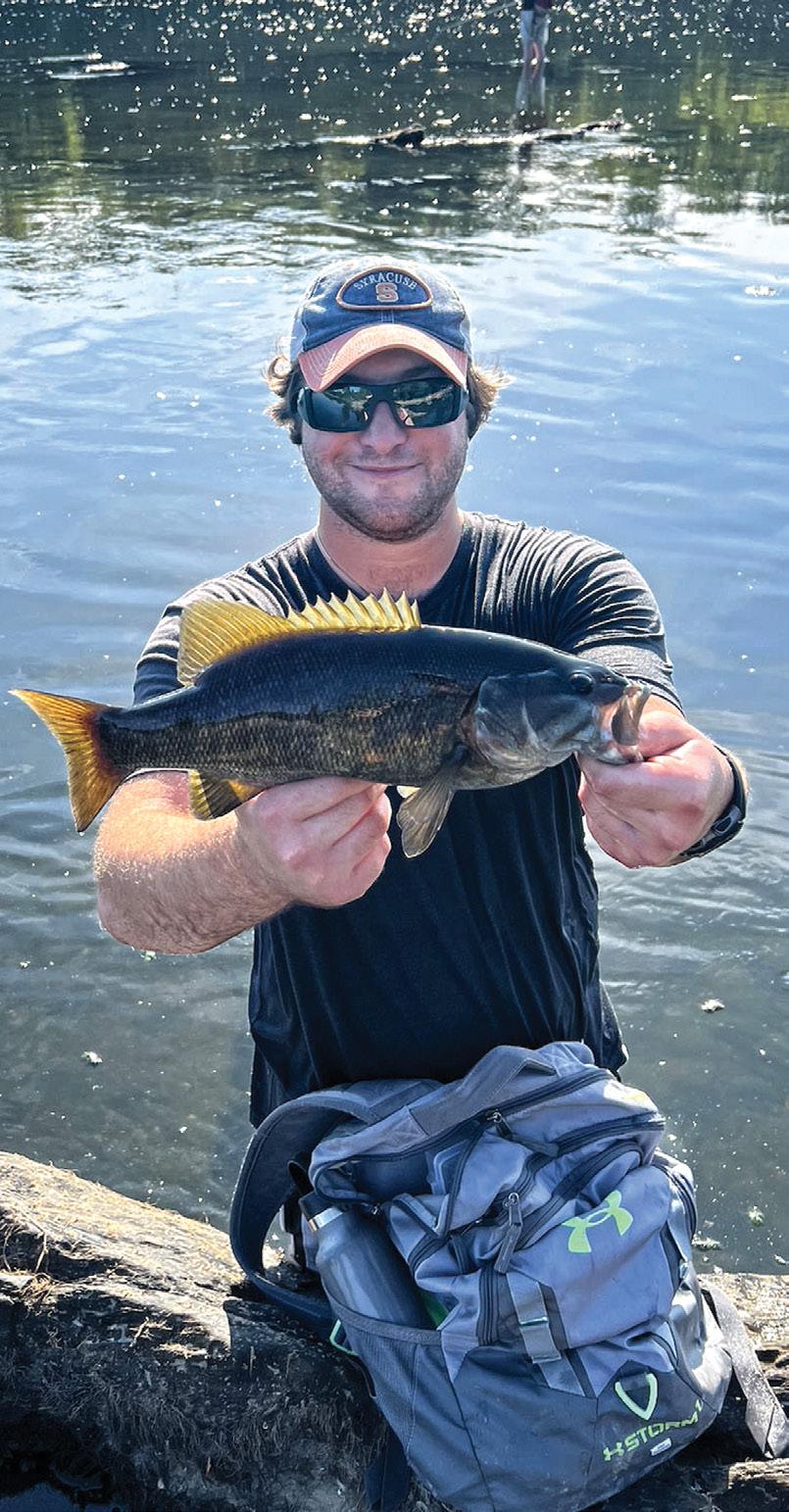
By Adam Greenberg
You’ve made it to the river –finally, away from all your stress and responsibilities – in pursuit of some mean ‘ol smallmouth bass. You find a juicy looking bunch of isolated boulders to cast at. The only thing left to do is open that tackle box and tie on a lure… but what are they eating?
Crawfish, crawfish, crawfish. These little mudbugs are found pretty much everywhere in the lower 48, and they are a smalljaw’s favorite food. When considering “matching the hatch,” I almost always start with craw imitations.
Now, I know a lot of beginner anglers struggle with fishing jigs for bass. I couldn’t get a bite on a jig to save my life until one glorious afternoon some years ago on the Oneida River in central New York. The water was as clear as I’d ever seen it. Schools of gizzard shad and yellow perch darted about. After working a jerkbait and flipping a Texas-rigged worm for over an hour, I had yet to hook into a bass.
I looked down and saw a big old crawfish by my feet. He was on the move, kicking his tail and rising just off of the bottom before falling back down to the mud again. Like this: kick, kick, fall. Kick, kick, fall.
As a last ditch effort, I tied on the only jig in my tackle box at the time, chucked it a few feet in front of me, and imitated the craw’s motion. I watched how the lure responded to the twitches of my rod and adjusted my movements accordingly until I got that kick, kick,
fall just right. Then, I threw a halfhearted cast along a downed tree and began to retrieve my lure as I had just practiced.
Bam. Much to my surprise, the jig got hammered and I pulled up a healthy smallmouth bass. Picture, release, cast again, this time with more gusto. Wham, another football. I caught around half a dozen fish before the sun went down and it was time to pack it in. But man was I excited to bring this technique home to my local river, the Potomac. I have, and it catches tons of bass. Try it for yourself, and you won’t be disappointed.
A finesse jig paired with a soft plastic, craw style trailer is one of the most effective lures for smallmouth bass in our region’s rivers.
You’ll want to pick a one-eighth ounce to a quarter-ounce size for slower current and a half ounce jig for situations with faster moving water. Smallmouth will often hit a finesse jig on the fall, so it’s important for the lure to sink slowly and give the skirt and trailer plenty of time to perform their tantalizing dance in the water column. But if you use a jig that is too lightweight for the speed of the river’s current, it gets swept out of the strike zone before reaching the bottom. And if you pick one that’s too heavy, you’ll be getting snagged in between cracks of the rocky riverbed every other cast. Finding that happy medium, that sweet spot, is how you will get more bites.
In terms of soft plastic trailers, I like a 2.5- to 3.5-inch craw imitator made from a buoyant material – anything that allows the claws to float when your jig rests on the bottom. Baits with two little claws or kickers are key for an effective finesse jig trailer, creating vibration and further slowing down the lure’s fall rate. Color selection is the same for both the jig and trailer; it will depend on water clarity. For clear water use natural colors such as green pumpkin or PB&J. In stained water, use dark colors such as black/blue or black/brown. I will typically match my trailer color to my jig color.
One more word of advice before you tie on that jig: use a fluorocarbon leader. Especially on days when the wa-

ter is gin clear, smallmouth can become very line shy. A monofilament leader can work too, but fluorocarbon is more resistant to abrasion from all the hard structure you’ll be fishing around and is also less visible to fish than mono. Three feet to four feet of eight-pound to 12-pound test will suffice.
There are several nuances you’ll want to take into account after mastering that kick, kick, fall motion of the jig. First and foremost is your pause, or how long you let your jig sit on the bottom before working it again. A crawfish in defensive position triggers the predatory instinct in a smallmouth bass to attack. So, if you don’t get a reaction bite from the fall or moving action of the jig, allow your lure time to pause and imitate a defensive craw. When your jig is resting on the bottom, the buoyant, soft plastic claws will rise and sway in the current, just as a crawfish raises up his claws when threatened.
So, how long do we pause? The answer is different every day. My general rule of thumb is the colder the water, the longer the pause. A bass’s metabolism slows way down in the colder months, making him less inclined to chase a faster moving bait. During the warmer times of year, the bass’s metabolism is up. He is hungry and will be much more willing to chase after prey on the move.
The best way to key in on how long the fish want a pause is to pick a baseline number of seconds and work your way up from there. For example, on a mild day in late October, three seconds is a solid baseline. Make a few casts; kick, kick, fall, count to three; kick kick fall, count to three, etc. No bites yet? Keep casting, but increase your pause count to five seconds. Still nothing? Try eight seconds. And so on. Adjust your baseline for warmer and colder water temperatures accordingly. Remember, every jig needs some rhythm to go along with the beat — now get out there and hit the dance floor.
When the winds are blowing the speed of the gusts is only one of the factors to consider.
By Mack Speed Walt
May 21, 2024: You plan the afternoon to jig for striped bass on the Bay. You check the forecast and it looks good, with waves of a foot. You grab the proper size lures, rods, and reels and you’re ready to go. You make your way towards the hotspot, but realize these waves are a bit more than one foot. Some may even be approaching three feet, or so it seems as you steady yourself, exercise your core, and make your presentation to the fish below. Beware the fetch! This has happened more than once to you, me, and every other angler
venturing out onto the Chesapeake, and as a reliability, quality, and angler engineer, it is a given that I had to research another rule of thumb. As with my other “rules” it’s to use as a starting point general guide.
Is there already a rule of thumb for wave sizes in Chesapeake Bay? After a bit of research and with the AIC emphasizing his aversion to math, I did find a guideline that applies without too many numerals and no use of the Greek Alphabet, symbols, or mathematical notations. In fact, there are a boatload of wave theory equations in the literature with all the above.
Editor’s Note: FishTalk’s official Math and Engineering Guru Walt Tomczykowski, better known as Mack Speed Walt since developing an accurate mathematical calculation to predict the ideal trolling speed for Spanish mackerel at any given time (see “Finding the Ideal Spanish Mackerel Trolling Speed” at FishTalkMag.com), usually uses numbers to explain stuff. We were blown away by the mackerel thing and shocked yet again when he developed a model to predict size choice guidelines for fishing soft plastics for rockfish season by season (see “Sizing Up Soft Plastic Fishing Lures,” also at the website). Now, he’s momentarily eschewed math (thanks Walt!) as related to predicting wave height in the Chesapeake Bay, but his observations are still important to consider. We know there are many shoreline anglers among us who may not be so into this article, but the value is too great to boat and kayak anglers to omit from these pages.
However, according to the Virginia Institute of Marine Science (Lucy, J., Ritter, T., & LaRue, J., 1979): “A rule of thumb for open waters is, that given


sufficient time, wave height will increase one additional foot (0.3 meter) for each seven-knot increase in wind speed.”
No complex equations, no Greek letters — just a practical guideline.
For more fascinating information on weather in the Bay check out the full article on this rule-of-thumb reference, which is easily found online. In the meantime, let’s look at what happened on May 21, 2024. According to the maritime forecast, it looked like the afternoon would be good with waves at one foot. Reality had other plans. Waves were much more than one foot on the south side of Poplar Island, and looking at the data at 2 p.m. the wind reached 14 knots. That would argue for waves of two feet according to our rule of thumb,
yet there were three-footers washing by and I now had barely fishable conditions rather than a pleasant afternoon of angling. Why? It had also been consistently blowing from the south for over 12 hours.
Again: beware the fetch! Fetch is the length of water over which a given wind has blown without obstruction. Wind blowing in the same direction, especially south or north in the Chesapeake Bay will, over time, increase wave height even as windspeed remains the same. Here’s a realized observation to the wave height rule: If the wind persists in the same direction for over 12 hours with multiple miles of fetch, add a foot to your wave height. Waves observed on May 21 were larger than predicted in that specific area
thanks to wind, time, and the added fetch.
Now, the moral of the story: Use this rule of thumb to prepare a Plan B for when the Bay gets bumpy. While the south side of Poplar was a washing machine, Eastern Bay was calmer (and the north side of Poplar was completely calm) thanks to an interrupted fetch. You can also head for the tributaries and river mouths close to shore to block the wind. Not only will you avoid testing your cushioned helm pad and your core balance, but you’ll also have a better chance of catching fish.
And remember, safety first — no one wants to hit wave after wave after wave, get sprayed, and lose a filling on the way back home!
Predicted after review of past reports gathered by Dillon Waters
For timely, up-to-date reports, visit our website FishTalkMag.com. Current reports will be published every Friday by noon — just in time for your weekend fishing adventures.
As summer begins to taper off we can expect bluewater fishing to heat up. But we do need the temperatures to begin dropping before we can hope for a serious spike in the marlin and tuna action. Either way mahi should still be around all month offshore and potentially inshore as well. Hopefully by the end of September the surf bite will accelerate, too, with some larger fish moving in to join the summertime panfish. Much depends, of course, on just when that summer heat begins to wind down.
In the past we might have hoped for the fall frenzy to begin this month but in recent years water temperatures have remained high enough through most or all of September that we had to wait a bit longer. If summerlike conditions prevail the fish will almost certainly remain deep with most of the action taking place at daybreak and sunset. If a few fronts push through and we get some cool nights, however, reservoir and pond action might just go through the roof. In the rivers, hope for enough rain to keep water levels up a bit but no monster storms shaking things up. Please, no storms.

No more tropical storms or hurricanes! Please, no tropical storms or hurricanes! This is a time of year when the action can get 100 percent shut down by a big storm, so let’s hope none hit our zone and we can enjoy some rockfish action on the Flats, perch action in the creeks, and nonstop blue catfish bites just about anywhere you soak a bait.
Rockfish will likely be the main target for most Upper Bay anglers this September, though last season we had a nice smattering of additional species like bluefish and spot in decent numbers north of the bridge. Also note that the past few seasons snakehead have been a worthy target in the Baltimore area creeks and west-side rivers to the north of the city, with plenty of anglers reporting very nice catches during September.
This zone of the Bay is a dice-roll for the month of September. There could be plenty of southern species swimming around, or rockfish may be the best candidate for dinner. One thing we’re all hoping is that the black sea bass bite we had last year returns in full form. With more keepers around than anyone could remember, 2023 was a banner year for these fish and hopefully 2024 will be, too.
Expect the month to begin with a serious focus on cobia, as we’ll only have until the 15th before the season runs out. Of course, big bull reds should provide a worthy distraction — both during and after the cobia are in. Slot reds in the rivers should be more than a bit appealing, too, considering that last season was a good one for them and this year has seen a continued upswing in their numbers, thus far.
Will the Sounds start cooling off this month, or will September be an extension of the dog days of summer? That’ll make a big difference in the shallows, where a cool-off will undoubtedly goose the action. In recent years it’s been a bit later in the fall that the speckled trout bite got out of the summer doldrums but don’t let that get you down — if this year is anything like last year we’ll have plenty of bluefish and mackerel chomping hard in open water even during heat waves.
We may have to wait just a little bit longer for the peak fall fishing to arrive but for the first half of the month anglers should have their hands full thanks to cobia, and we should enjoy some spectacular fishing in the CBBT zone for everything from sheepshead to Spanish mackerel. Plus if we get some cooling temps there’s an excellent chance the pups and specks will start rampaging in the rivers.




reports will be published on our website every Friday by noon, just in time for your weekend fishing adventures.




By Robert Lombardi
The open exposure of marsh mudbanks makes them ideal for kayak trolling. Mudbanks are vertical walls of mud that are generally four to five feet deep on a high tide. They have a step down and/or trough where the wall meets the bottom. These are not great targets on low tide but can be outstanding on high or rising tides. They can be particularly productive when near a grass flat and when bait is around. As water fills the bank predator fish will ambush or chase bait along the wall using it as structure.
Trolling mudbanks and other long vertical structure (like riprap) can be very productive, but all mudbanks are not the same with the taller/steeper banks being the better choice. These banks are found in areas of high current flow and/or open exposure to water and wind.
Trolling a bank is much easier than trolling a grass flat. Any nearby grass flat will not extend up to the edge of the bank, so grass is no longer a concern. This allows you to open up the tackle box with your favorite open-hook soft and hard baits. On a high tide, troll very tight to the bank with a single handheld rod parallel to the water. You can add some action to the bait with random slight twitches. Holding the rod allows you to feel the bottom structure, the bite, or when a fish just bumps the bait rather than fully committing to the strike. Don’t stop the troll if bumped; note the location and finish to the end of the mudbank. Then circle back around and fan cast the area you felt the bump.

This will often produce a number of fish that you never would have caught without holding the rod in your hand and feeling the bump.
On a low tide, troll off the bank in three to four feet of water. During periods of low tide fish will seek the safety of deeper water by moving off the bank. This may take you into nearby grass flats so choose your baits accordingly. Concentrate on the outside edge of the grass because this is where the transition to deeper water will start. This may take you well off the shoreline, but remember that at this point the grass line has become your structure.
Structure below the surface of the mudbank presents an additional opportunity. Erosion is also found below the surface and on the bottom, creating a trough at the bottom of the wall. This is more pronounced under mudbanks with exposure to open water and high winds. These banks are generally more severe than what you will find in more protected areas.
Shallow-running crankbaits like the Diawa SP Minnow are particularly effective baits when trolling off mud banks. Longer, thin-profile baits with mild action that run shallower than other crankbaits of similar size work well in this situation.
Excerpted from “Kayak Fishing the Eastern Shore of Maryland and Virginia” by Bob Lombardi. If you’re a kayak angler and you hope to target the backwater marshes of the Shore for fish like stripers, specks, and reds, the intel he shares is exactly what you’re looking for. The book is $19.95 and available at amazon.com
One of the most difficult ways to learn how to fish the Chesapeake Bay and Atlantic Ocean is trial and error. Then there’s the boat issue; we don’t all have one. Luckily, the Bay is full of knowledgeable guides and charter captains ready to show you the ropes. Below you will find a directory of professional guides, charter boats, and head boats to get you started on your quest for the perfect fish. Whether you like to fly fish, troll, or bottom fish, there’s likely a local expert who can lend a hand.








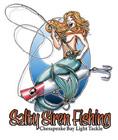

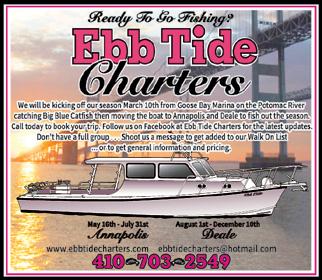













Dragonfly DGB 15 Center Console Evinrude 40 w/ 126 hours still under warranty. Teak colored helm and accents. New batteries. Many extras! In Norfolk. $22,500 - aluminum trailer included. Email for details osbornek@hotmail.com
2014 Tidewater 196 CC Yamaha F115 w/ 140 Hours. Trailer Included. $27,999 RT 113 Boat Sales, 302.436.1737, www.rt113boatsales.net
2022 Yamaha Marine 195S Bowrider Luxury features at only 19feet! Powered by 1.8L Super Vortex engine w/ jet drive. $39,900 Beacon Light Marina, 410.335.6200, www.beaconlightmarina.com

Trophy Bayliner 20’ 2002 Mercury 150 2-stroke, Roller trailer, runs great, Cuddy cabin w/ toilet, well maintained. Price Slash $7,999 (Stock# U-361) Rudy Marine, 302.945.2254, www.rudymarine.com
2007 Yamaha SX210 Great fishing boat! Dual Yamaha 110Hp 1052CC engines w/ jet drives, and much more! $21,900 Beacon Light Marina, 410.335.6200, www.beaconlightmarina.com

Yamaha 212 Limited Edition Jet Boat 2018 Twin Yamaha 180Hp motors (only 83 hours), Tandem Axle custom fitted trailer, JL Audio system, Bimini, Wakeboard Tower, Swim Ladder, Swim Platform, Wakeboard Rack. (Stock# U-427) Call for more informationRudy Marine, 302.945.2254, www.rudymarine.com

2002 Sea Hunt Victory 225 Yamaha V4 115Hp Four-Stroke outboard w/ 422 hours, dual battery w/ a Perko Master Battery switch, ICOM VHF Radio and remote mike, Garmin 188C Depth Finder w/ Blue Chart Thumb Drives for Norfolk and Chesapeake Bay, GPS, and lots of extras! 5 Star Trailer w/ new surge break/ coupler and electric winch. $18,500 Contact riverjanjohn2@me.com or 703.298.7370. For more info, visit: www.boattrader.com/boat/ 2002-sea-hunt-225-9405659

22’ Grady-White ‘16 $79,500 Curtis Stokes 410.919.4900
curtis@curtisstokes.net www.curtisstokes.net

22’ Shamrock ‘99
Curtis Stokes
curtis@curtisstokes.net www.curtisstokes.net
contact beatrice@fishtalkmag.com

Chaparral 226 SSI Wide Tech 2012 Volvo Penta 5.0, Interior Seating in excellent condition, Bilge Pump, Navigational Lights, Bow Seating, Sun pad, Full Cover, Ski Tow Bar, New Bottom Paint. WAS $29,999 - Price Slash $24,995 (Stock# U-406) Rudy Marine, 302.945.2254, www.rudymarine.com

1989 Correct Craft 23 Fish Nautique 351 Pleasurecraft FWC Recent long block. Lowrance fish finder/plotter. VHF radio. Swim platform. New gauges and bilge pumps. And more! $14,500 painted steel trailer included. Contact 443.510.8168 or rghinesjr@aol.com
2019 Crownline E235 Yamaha F200 w/ 95 Hours. Trailer Available. $54,990 RT 113 Boat Sales, 302.436.1737, www.rt113boatsales.net

Hydra-Sport 230 CC 2004 Yamaha 200Hp engines, Loadrite Tandem Galv. Trailer, Trimtabs, digital gauges, fishbox, livewell, spreader lights, rocket launchers, washdown, sink, head, rear jump seats. $28,500 (Stock# U-425) Rudy Marine, 302.945.2254, www.rudymarine.com

Trophy Bayliner 23’ 2302WA 2000 Mercury 225 Optimax, Loadrite roller trailer, hard top w/ electronic box, runs great, cuddy cabin w/ toilet, wellmaintained. WAS $19,995 - Price Slash $12,975 (Stock# U-332) Rudy Marine, 302.945.2254, www.rudymarine.com
2015 Yamaha Marine 242 Limited S Pinnacle of performance and luxury, watersports edition! Twin 1.8L High Output engines w/ jet drives. Price just reduced! $45,000 Beacon Light Marina, 410.335.6200, www.beaconlightmarina.com
2020 Yamaha Marine 242X New listing! Extremely well-kept, lots of addons. Powered by Twin 1.8L High Output engines w/ jet drives. $60,900 Beacon Light Marina, 410.335.6200, www.beaconlightmarina.com
2024 Pathfinder 2400 Open Yamaha F300. Trailer Included. RT 113 Boat Sales, 302.436.1737, www.rt113boatsales.net Twin
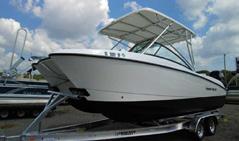
4-stroke Mercury, new custom fitted alum. Loadrite trailer, dual console, powder coated hard top, full head compartment w/ toilet, super load, 9 hours. Price Slash $139,998 (Stock# U-390) Rudy Marine, 302.945.2254, www.rudymarine.com

Wellcraft 248 Offshore 1985 Suzuki DF250, 4-stroke engine (921 hours), 2014 Loadrite tandem axle roller trailer, navigational lights, bilge pump, radar, Garmin map, dd, ff, cuddy cabin, (4) Capt. Seats. $12,800 (Stock# U-428) Rudy Marine, 302.945.2254, www.rudymarine.com For all the latest listings, visit fishtalkmag.com

Wellcraft 24’ 242 Fisherman CC 2020 Mercury 250 Verrado, new alum. Loadrite trailer, powder coated hard top, head compartment w/toilet, low hour, super loaded. Price Slash $46,994 (Stock# U-396) Rudy Marine, 302.945.2254, www.rudymarine.com

(key Gull) 25’ Carolina Classic ‘06 $49,000 Curtis Stokes 410.919.4900 curtis@curtisstokes.net www.curtisstokes.net
1999 Parker 2510 WA Very well-kept w/ fresh bottom paint and deck paint. Repowered in 2020 with a 250Hp Suzuki 4-stroke w/ only 405 hours. $49,999 Beacon Light Marina, 410.335.6200, www.beaconlightmarina.com
2004 Grady White 258 Journey Beautiful single-owner boatvery well kept and maintained. Powered by Yamaha F225Hp outboard engine. $47,900 Beacon Light Marina, 410.335.6200, www.beaconlightmarina.com
2018 Parker 2520 XL Sport Cabin 25’ Yamaha F300, under 500 hours, clean boat, lift kept, Garmin GPSMAP 1042xsv, freshwater washdown, second station, anchor windlass, livewell, and more! $85,000 Call Joe 410.798.0421
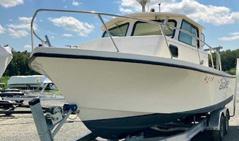
Parker 25’ 2520 Pilot House
1993 Yamaha 250Hp, Karavan aluminum trailer, solid floor and transom, super clean, awesome 6pack boat. Price Slash $38,500 (Stock# U-389) Rudy Marine, 302.945.2254, www.rudymarine.com
2018 Cobia 261 CC Twin Yamaha F150’s w/ only 107 Hours. Trailer Available. $114,999 RT 113 Boat Sales, 302.436.1737, www.rt113boatsales.net
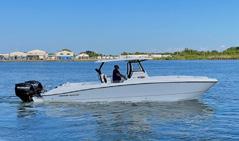
2023 Twin Vee 260GFX Save Money, Don’t Buy New! Only 58 hours! Suzuki Warranties. Never fished and only lightly used in brackish water. Experience the soft ride and economical operation of the latest offering from Twin Vee. You’ll never look at V Bottom boats the same! Garmin 12” Touchscreen display, Garmin VHF, Garmin sounder, Thru hull transducer, Fusion Stereo. $165,900 Includes Trailer. Total Marine, 410.604.6000, jrenfrow@totalmarine.com www.totalmarine.com
2024 Cobia 262 CC Twin Yamaha F150’s. Ameratrail Trailer Available. RT 113 Boat Sales, 302.436.1737, www.rt113boatsales.com
2024 Pursuit S268 Sport Twin Yamaha F200’s. Trailer Available. RT 113 Boat Sales, 302.436.1737, www.rt113boatsales.net

Cutwater 26’ C-26 2016 Volvo Penta in-board diesel, new customer fitted Loadrite aluminum trailer, super loaded boat, like new condition, super low hours. Price Slash $134,500 (Stock# U-395) Rudy Marine, 302.945.2254, www.rudymarine.com

Jeanneau 26’ 7.5 CC 2022 Yamaha F300 4-stroke, white powder-coated T-top, Garmin electronics, Fusion stereo, electric windlass, bow thruster, head compartment w/ toilet, under 40hrs., super clean. Price Slash $89,988 (Stock# U-387) Rudy Marine, 302.945.2254, www.jeanneauboatsforsale.com
2021 Grady White 271 Canyon Twin Yamaha F300’s w/ 123 Hours. Yamaha Warranty Until 11/7/2025. Trailer Included. $199,999 RT 113 Boat Sales, 302.436.1737, www.rt113boatsales.net

(Reel Blessed) 28’ North Coast ‘21 $239,000 Jack Kelly 609.517.2822 jack@curtisstokes.net www.curtisstokes.net
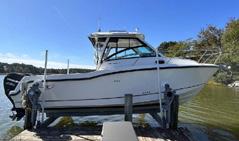
2017 Boston Whaler 285 Conquest $239,987 Fully loaded and IMPECCABLY maintained 2017 Boston Whaler 285 Conquest. Twin 250Hp Mercury Verado’s - only 320 hrs. Lift kept, single owner boat. Call Josh Miller at 810.531.9191 or jmiller@pocket-yacht.com www.pocketyachtco.com

2022 Cutwater 288 LE $339,987 fresh water kept w/ very low engine hours. She comes w/ the trailer and a sevenyear ceramic coating on the interior as well as the exterior. Call Chris Holtsclaw at 252.606.4004 or choltsclaw@pocket-yacht.com www.pocketyachtco.com
2024 Cobia 280 CC Twin Yamaha F300’s. Trailer Included. RT 113 Boat Sales, 302.436.1737, www.rt113boatsales.net

Chaparral OSX 280 2021 Twin Yamaha 200Hp 4-stroke, Power Arch w/ Canvas Bimini top, Grey Sea Deck Flooring, Lenco Trim tabs, Windlass, Optimus 360 Joystick, Low Hours and Super Clean. Price Slash $144,950 (Stock# U-404) Rudy Marine, 302.945.2254, www.rudymarine.com

2016 Sailfish 290 CC $159,987 Loaded w/ standard fishing amenities, including 16 rod holders, 35-gallon leaning post live well, 30-gallon transom live well w/ highspeed pickup, four fish boxes in the floor, rod storage and much more. Call Lee Cook at 810.531.9191 or leecook@pocket-yacht.com www.pocketyachtco.com

(Hot Pursuit) 30’ Pursuit 3000 ‘00 $49,000 Curtis Stokes 410.919.4900 curtis@curtisstokes.net www.curtisstokes.net
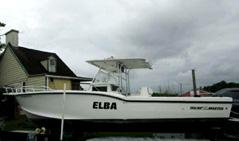
(Elba) 31’ Ocean Master ‘98 $79,500 Curtis Stokes 410.919.4900 curtis@curtisstokes.net www.curtisstokes.net

2000 Formula 31 PC FULLY LOADED! T/5.7L 310Hp Mercruiser FWC, B3, Kohler gen, AC/HT, Raymarine axiom, Quantum radar, full canvas & isinglass, sleeps 6. Well-maintained w/ $11K recent work. Kept indoors. $50,000 202.798.0443 or jperez9630@gmail.com
2024 Cobia 320 CC Twin Yamaha XF425, Trailer Available. RT 113 Boat Sales, 302.436.1737, www.rt113boatsales.net
2024 Pursuit DC326 Twin Yamaha F300’s. Yamaha Helm Master Joystick w/ Autopilot. Generator, Air Conditioning, Full Electronics Package. RT 113 Boat Sales, 302.436.1737, www.rt113boatsales.net

33’ Bertram ‘80 $45,000 Curtis Stokes 410.919.4900 curtis@curtisstokes.net www.curtisstokes.net
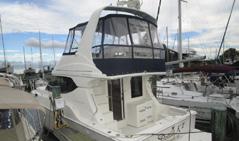
(Dottie k) 34’ Silverton ‘05 $119,000 Curtis Stokes 410.919.4900 curtis@curtisstokes.net www.curtisstokes.net
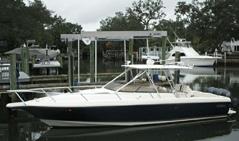
34’ Intrepid ‘01 $145,000 Curtis Stokes 401.919.4900 curtis@curtisstokes.net www.curtisstokes.net

(Rivendell) 36’ Nauset ‘90 $98,000 Evan Joseph 804.396.5446 evan@curtisstokes.net www.curtisstokes.net
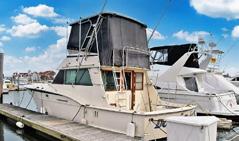
(Double Eagle) 42’ Hatteras ‘78 $89,900 Jack Kelly 609.517.2822 jack@curtisstokes.net www.curtisstokes.net
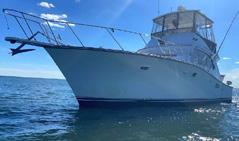
(Martini & Me) 42’ Post ‘81 $35,000 Andy Stratton 908.265.7670 andy@curtisstokes.net www.curtisstokes.net
2023 Pursuit S428 Sport Quad Yamaha XF425’s w/ 170 Hours. Yamaha Warranty Until 5/13/2030. RT 113 Boat Sales, 302.436.1737, www.rt113boatsales.net
Annapolis Boat Shows Wants YOU! Annapolis Boat Shows is hiring for the Fall 2024 Boat Shows! Opportunities ranging from water crew to gate support are available August through the Shows in October. Show dates for reference - Powerboat: Oct 3-6, Sailboat: Oct 10-14, Annapolis City Dock. Hourly wage, some meals, and free entry into Shows included. Completion bonus available. To learn more and apply, please visit: www.annapolisboatshows.com/job-opportunities www.annapolisboatshows.com
Seeking P/T Magazine Delivery Drivers for threeday-a-month magazine distribution routes in Maryland. Compensation based upon quantity of stops. Must have a valid driver’s license in good standing, reliable vehicle, and be able to lift up to 25 lbs. For more info, please email info@fishtalkmag.com
Yacht Sales - Curtis Stokes and Associates, Inc. is hiring new salespeople for our Chesapeake area operation. Candidates must be honest, ethical and have boating experience. This is a commission only position. Contact Curtis Stokes at 410.919.4900 or curtis@curtisstokes.net www.curtisstokes.net



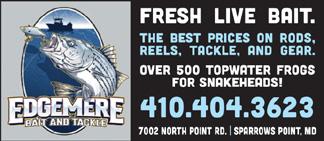




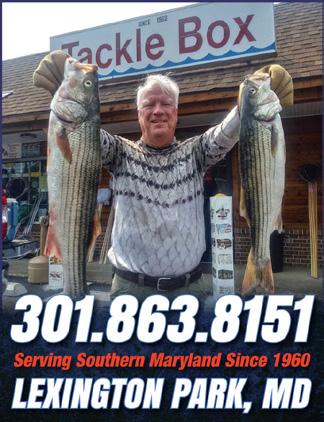

2062 Somerville Road, Annapolis, MD 21401, 410.571.1111, and 12826 Ocean Gateway #9548, Ocean City, MD 21842, 410.213.2840, www.alltackle.com
Anglers Sport Center 1456 Whitehall Road, Annapolis, MD 21409, 410.757.3442, www.anglerssportcenter.com
•



• Your photo submission must include anglers with their catch of flathead catfish or blue catfish caught while fishing

• Vertical high-resolution photos work best, with room for our logo header and cover lines.
• If the angler is a child is on a boat, make sure he or she is wearing a lifejacket (properly) in accordance with state boating regulations, or we won’t consider it for the cover.
• Once the submission period has ended, our graphic design team will disqualify any photos that do not meet our printing requirements (any images that are too low of a resolution, are blurry or too dark, if a child was pictured without a lifejacket, and if there was not enough room in the image for our FishTalk header, footer, and cover lines). We will then let you vote for the winning cover for the September issue of FishTalk Magazine!
Legasea Marine announces its partnership with Cox Marine as an authorized dealer of their diesel outboard engines. Cox Marine is pioneering advancements in marine propulsion technology with their diesel outboard engines that deliver unmatched torque, fuel efficiency, and serviceability. These engines were designed from the outset specifically for outboard applications in both the pleasure craft and government sectors, providing innovative, yet sensible solutions. “Becoming an authorized dealer for Cox Marine is a significant milestone,” said Chris Hall, president of Legasea Marine. “We are excited to offer our customers access to the industry’s most advanced diesel outboard engines and provide increased performance and reliability.” Legasea Marine has been at the forefront of this innovative chapter, with service manager Nick Smith having the distinction as the first person to rig a Cox outboard during the manufacturer’s pre-market pilot program. The CXO300 engine, Cox Marine’s flagship product, boasts a robust 300 horsepower and a torque output unmatched by any other diesel outboard on the market. This results in faster acceleration, improved fuel economy, and longer service intervals than comparable gasoline outboards. Legasea Marine will also provide comprehensive support services, including installation, maintenance, and repairs. legaseamarine.com
For more than a dozen years, Capt. Chris Parker has managed several TowBoatUS on-water towing and assistance locations or “ports,” around the Bay. Now Parker and his wife, Katie, are new owners of TowBoatUS Gwynn’s Island and TowBoatUS Upper Rappahannock, bringing the total number of their red boat ports in Maryland and Virginia to four. The companies, part of a nationwide network of more than 300 ports, offer on-water towing, soft ungrounding, battery jump, and fuel drop-off services. “We’ve worked hard to help our BoatUS members and boaters every way we can,” said Parker, who first began as an employee of TowBoatUS as a towing captain in 2012. “As we’ve grown, we’ve continued to do that. We’re proud of our track record of trust and getting the job done safely. What Katie and I really enjoy is helping an unexpected bad day out on the water get a whole lot better.” The Parkers’ TowBoatUS port roster includes Crisfield, MD, and Reedville, Upper Rappahannock, and Gwynn’s Island, VA. Additional partnerships operate in Southport, Holden Beach, and Ocean Isle, NC. All of the company’s captains are U.S. Coast Guard-licensed. Separate from BoatUS on-water towing, the company offers boat salvage, spill cleanup, and vessel disposal services. The fastest way to request assistance from TowBoatUS Gwynn’s Island and Upper Rappahannock is to download the BoatUS App, which connects boaters to the closest local towing captain. Additionally, the Gwynn’s Island port can be reached at (804) 724-4633 and Upper Rappahannock at (804) 724-0833 or by phoning the BoatUS toll-free 24/7 Dispatch Center at (800) 391-4869. BoatUS.com/Towing
Aspen Power Catamarans announces a strategic partnership with Yanmar Marine International (YMI). Aspen will now use a single inboard diesel Yanmar on their C100 model. These engines are known for their solid engineering, lightweight build, smooth operation, and quiet performance.
The new Yanmar combines with Aspen’s unique design to provide maximum efficiency and performance while maintaining a smooth, stable ride. The Yanmar 4LV250 engine not only fits well in Aspen’s C100 but boasts remarkable improvements, achieving 4.1 mpg at 18 mph—a 32 percent increase in efficiency over previous models. “I’ve been building catamarans for the last 30-plus years, and I have never had a product that has run this eco-friendly. It’s twice the efficiency of a trawler at double the speed,” says Larry Graf, Aspen’s founder and chief engineer. The partnership marks a significant milestone for both companies as they combine their expertise to introduce a new era of superior powercatamarans.
aspenpowercatamarans.com
Whether your company is looking to hire new employees or has staff in need of training, the Marine Trades Association of Maryland (MTAM) has the resources to help. It’s a theme across the industry—the workforce is aging and training an entry-level employee can be costly. You are paying them a salary, but they aren’t working billable hours. This is where MTAM’s Workforce Development Program can help. Through a grant from the Maryland Department of Labor, MTAM has funds to offset the cost of hiring and training new employees who are entering the marine trades for the first six weeks of their employment. Getting involved is easy. Your new hire would be considered an “intern,” and you would follow some guidelines for mentoring and reporting their progress with the intent of developing solid work skills. In turn, MTAM can reimburse you for up to half of the minimum wage for their first six weeks. That can be up to $1500 for taking the chance to hire someone new who may be your next great tech or mechanic. MTAM can also offset the cost of additional training for your current employees. This can include travel costs as well as tuition for up to $1000. The program is good for any employee, regardless of age, as long as they have gained new skills, or a salary or promotion within the company. Questions? Reach out to Emily Decker, MTAM’s workforce development coordinator at edecker@mtam.org mtam.org
